How to Get Rid of the Toughest of Weeds
Weeds have developed traits that make then top-notch survivors, allowing them to colonize and choke out weaker competitors. Learn how to beat the worst weeds.
Different weeds pop up at different times throughout a gardening season and progress at their own pace and style.
Since most weeds are best controlled when young (or even before as in the case of preventing them), it pays to keep a close watch on what’s brewing when in your yard.
Here’s a month-by-month “weed-watch calendar” that highlights 45 of the most common landscape weeds – five for each month, February through October – by when they’re most noticeable.
You can explore our extensive library of weed control articles, including in-depth guides to many of the weeds listed here, as well as weed-control strategies. You can also check the Preen Weed ID, a tool to help gardeners to identify 114 common weeds by name, type, or location, complete with photos and descriptions to help recognize and manage common weeds. It also provides Preen product recommendations for effective weed control.
This short, mat-forming medium-green weed with the little rounded leaves and tiny white flowers is one of the first to show up, often while it’s still winter.
Lifecycle: Winter annual weed
Related article: How to Control Chickweed
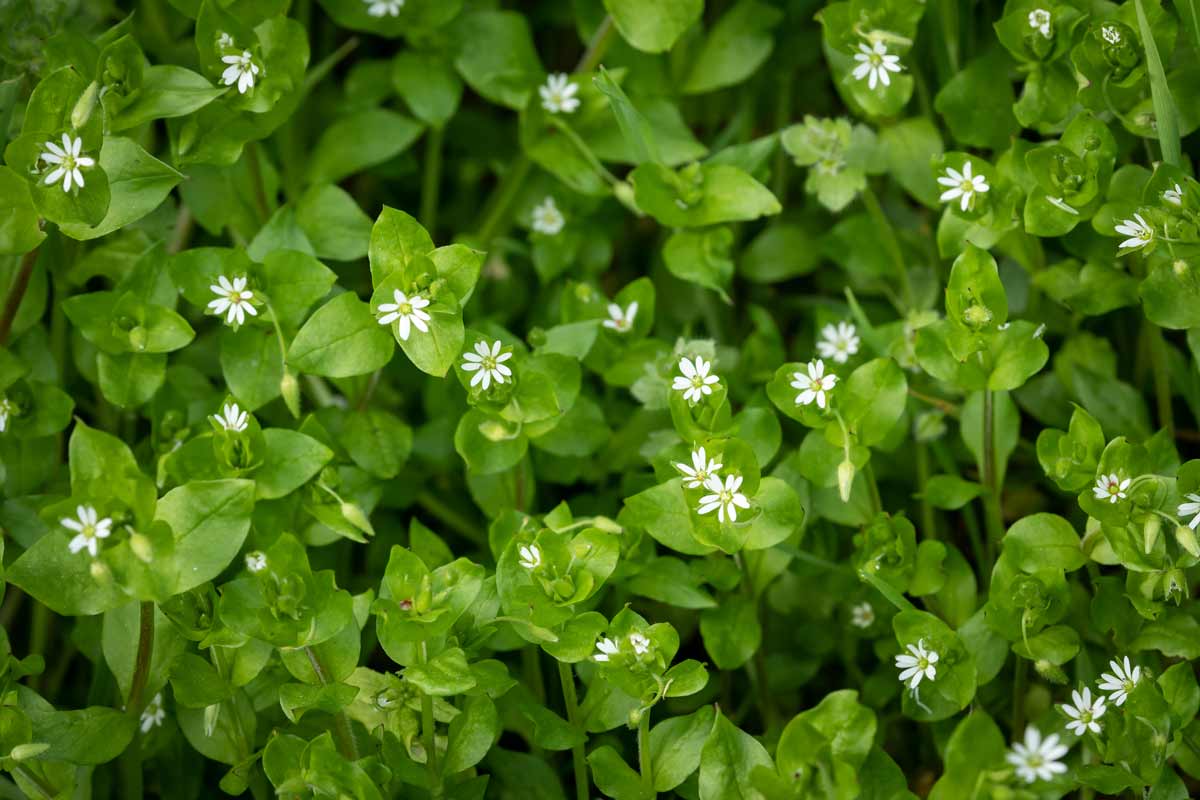
Common chickweed (Stellaria media)
Winter-sprouted plants with rosettes of small, rounded leaves start sending up six-inch-tall wiry stems with tiny white flowers in late winter. Plants shoot seeds as the flowers mature in March.
Lifecycle: Winter annual weed
Related article: How to Control Hairy Bittercress
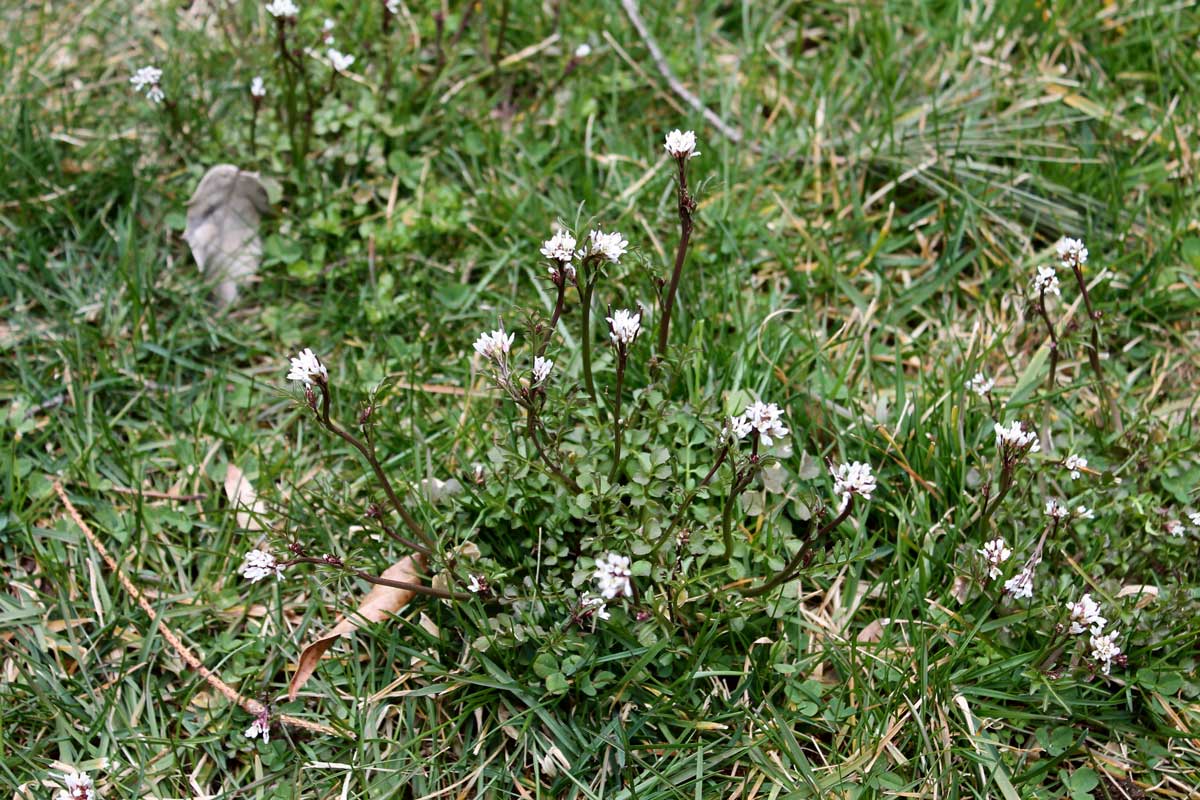
Hairy bittercress (Cardamine hirsuta)
Winter-sprouted plants with rosettes of small, rounded leaves start sending up six-inch-tall wiry stems with tiny white flowers in late winter. Plants shoot seeds as the flowers mature in March.
Lifecycle: Winter annual weed
Related article: How to Control Henbit
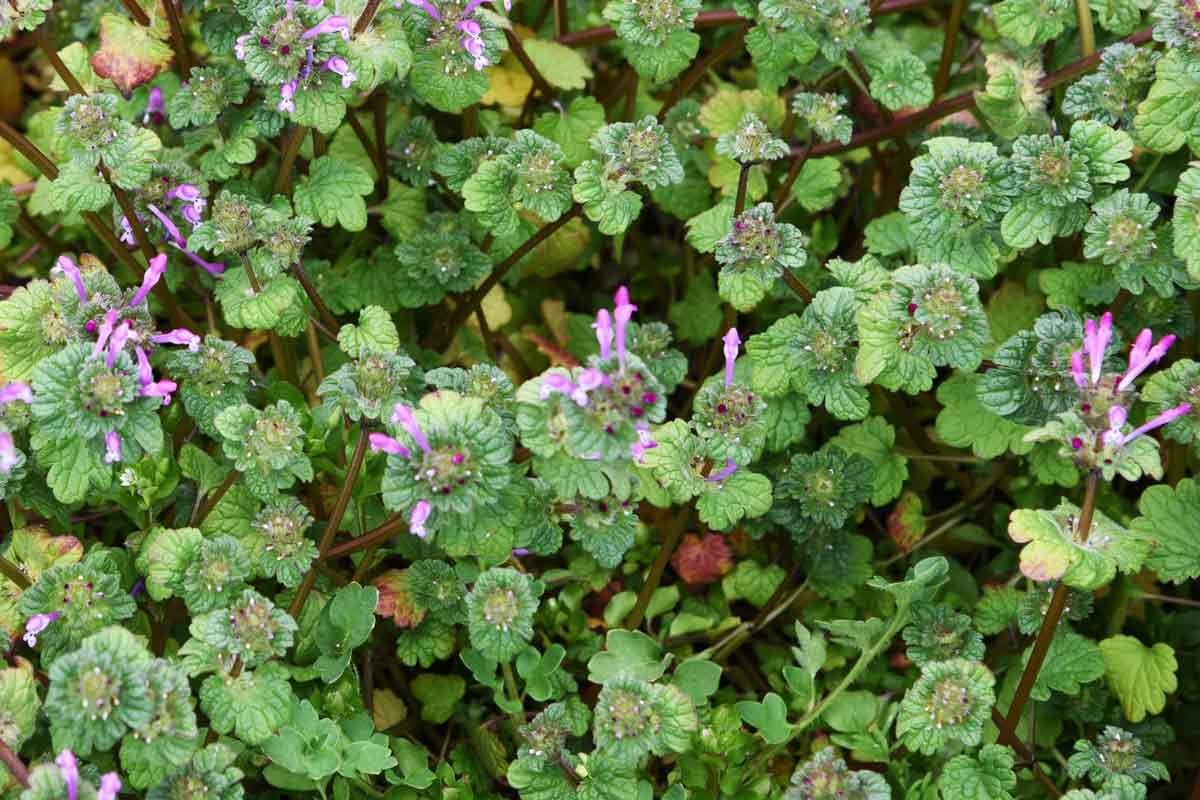
Closely related and similar in looks and habit to henbit, purple deadnettle has reddish square stems and leaves that are more triangular than heart-shaped.
Lifecycle: Winter annual weed
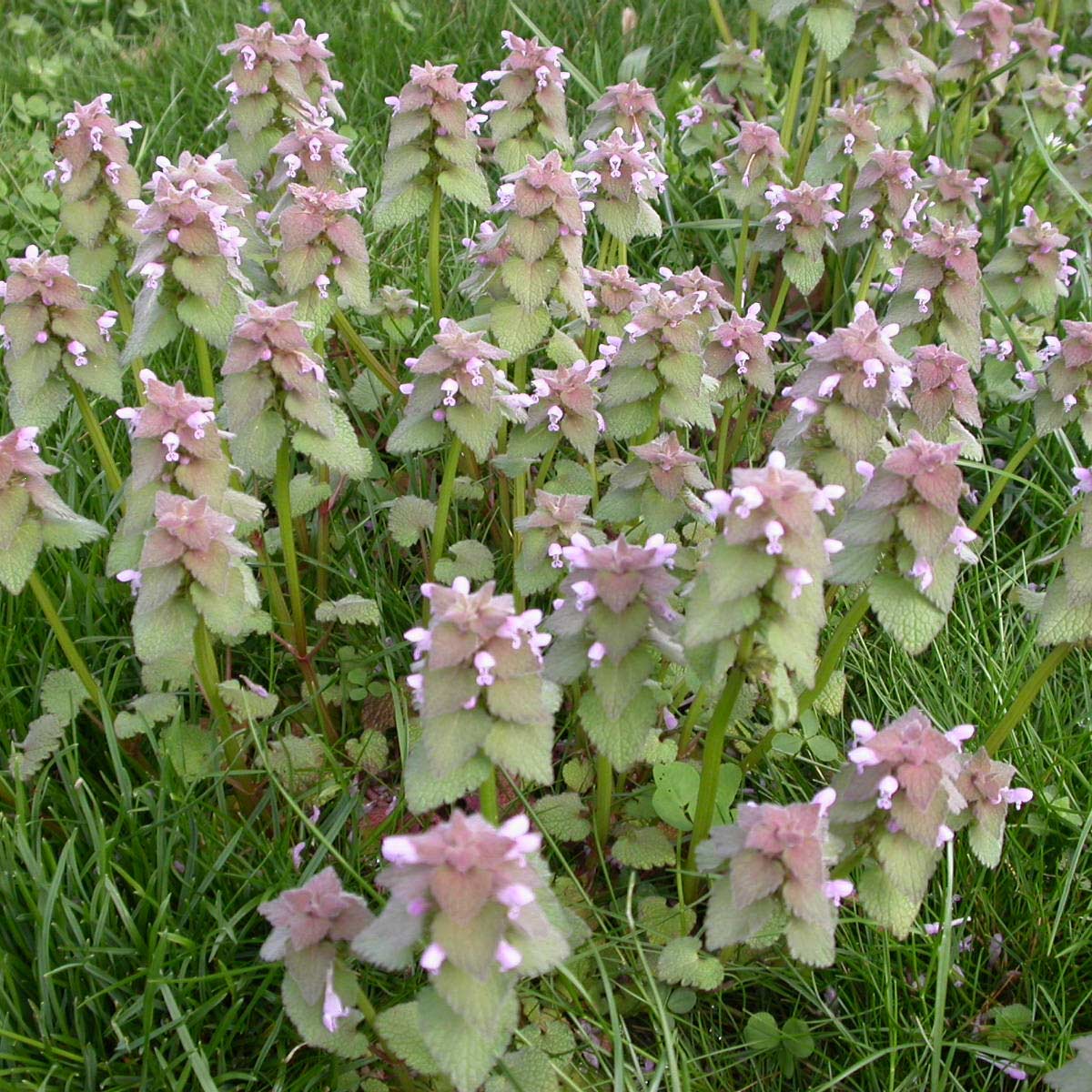
The blue flowers on this short, spreading, and very-early-arriving weed give away corn speedwell’s identity. The narrow triangular leaves are hairy.
Lifecycle: Winter annual weed
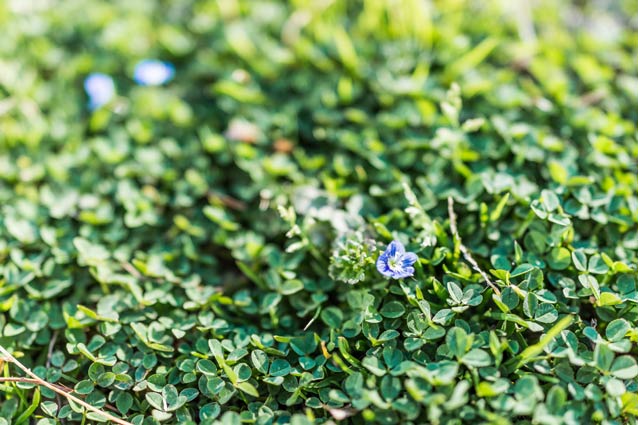
These closely related bulbs send up clumps of 10- to 16-inch-tall stems that have a distinctive oniony scent and flavor. They produce pincushion-like little pink flowers at the tips before going dormant by summer.
Lifecycle: Perennial weeds
Related article: How to Control Wild Onions and Wild Garlic
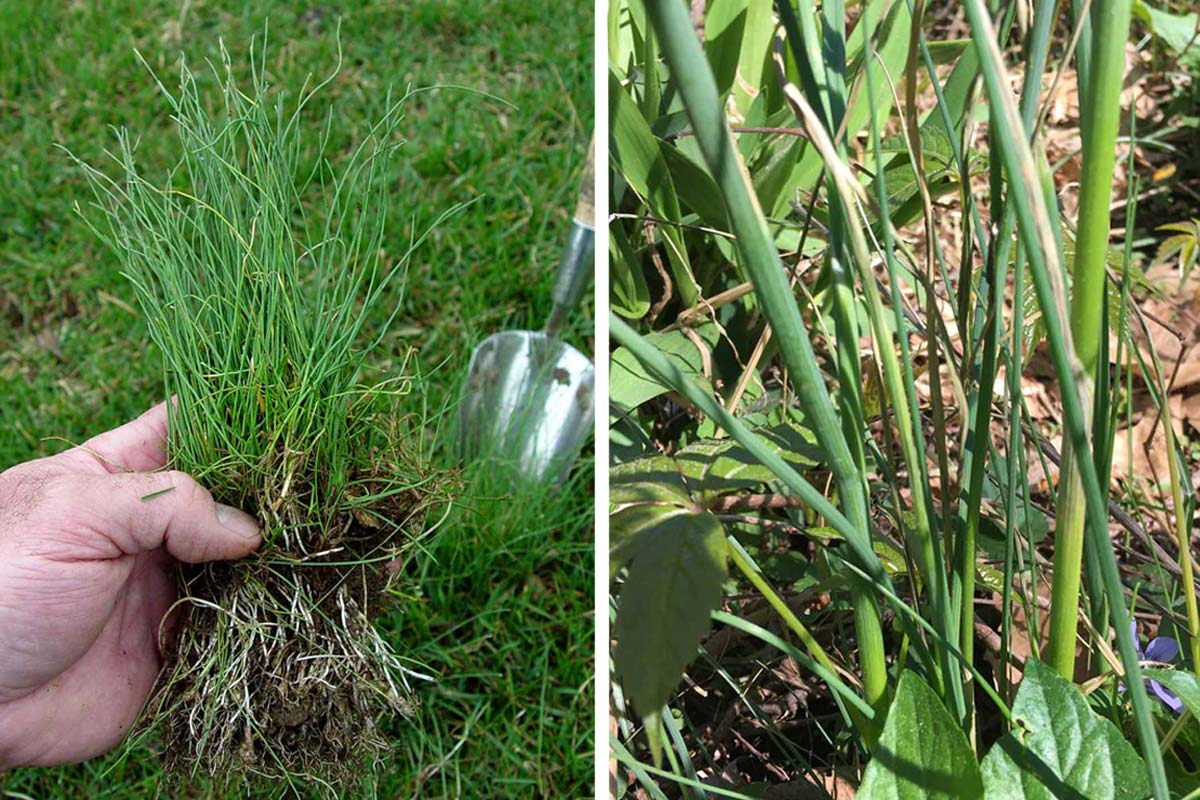
Seeds sprout in cold soil and quickly grow into foot-tall weeds that are producing buttony, daisy-like yellow flowers by late March into April.
Lifecycle: Winter annual weed
Related article: How to Control Groundsel
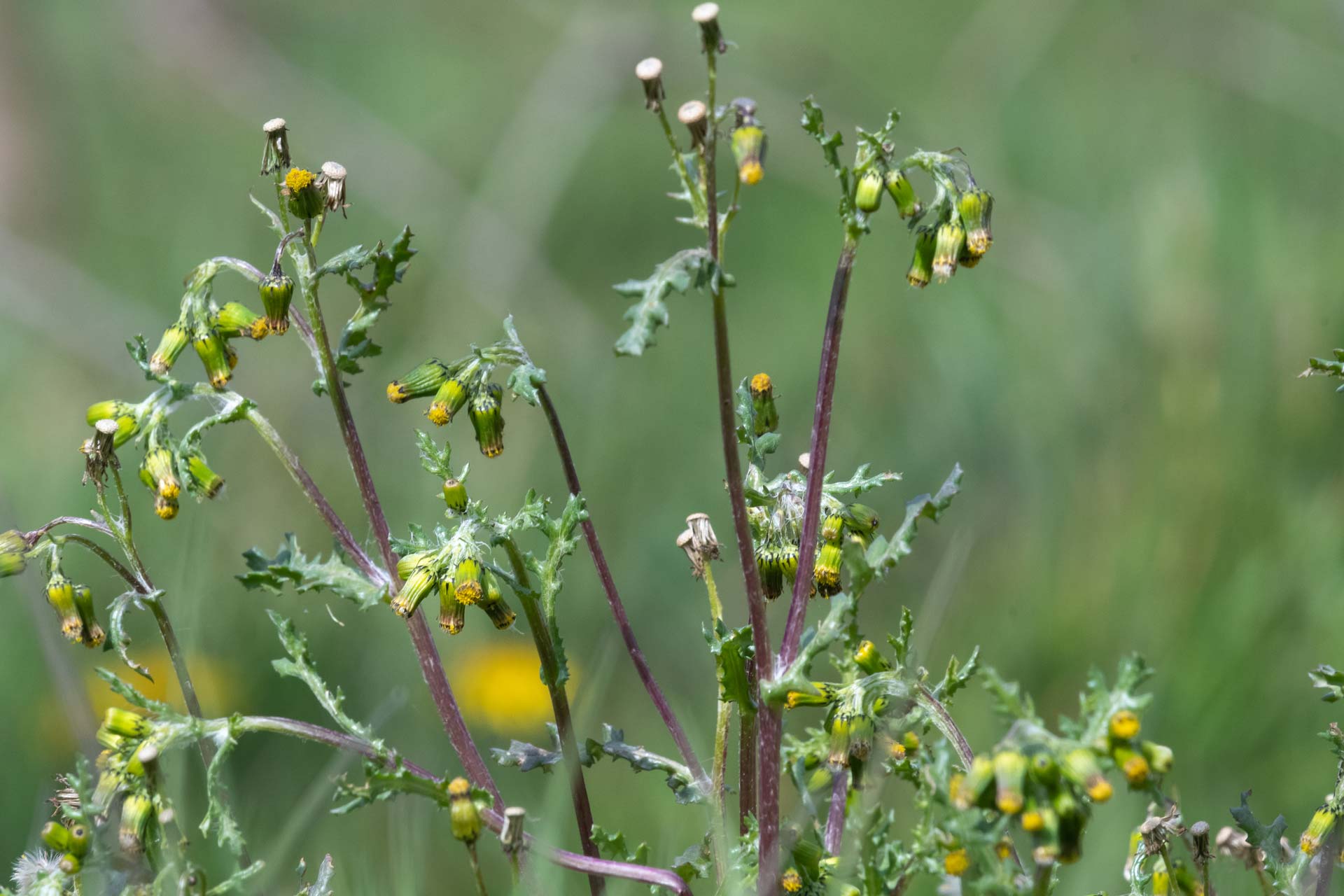
Get to know the look of this painful plant with the stinging hairs as soon as it leafs out in spring. The leaves are dark green, lance-shaped, and pointed at the tips with toothed margins. Those stiff little hairs are on the stems, too.
Lifecycle: Perennial weed
Related article: Stinging Nettle—Perennial Weed & Rampant Grower
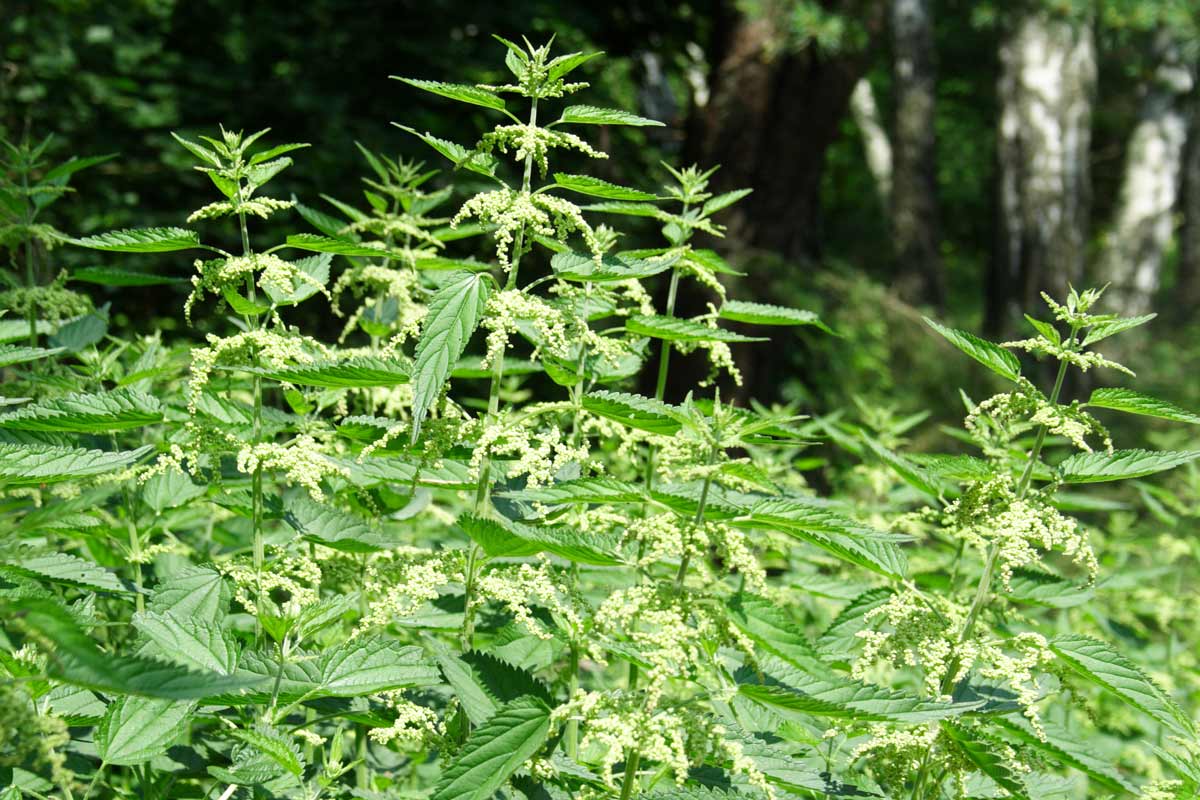
This broccoli-family plant is one of the season’s earliest to flower, producing small white flowers from rosettes of elongated, deeply lobed foliage. The eventual seed capsules on the long flowering stems have a distinctive triangular shape.
Lifecycle: Winter annual weed
Related article: How to Control Shepherd's Purse
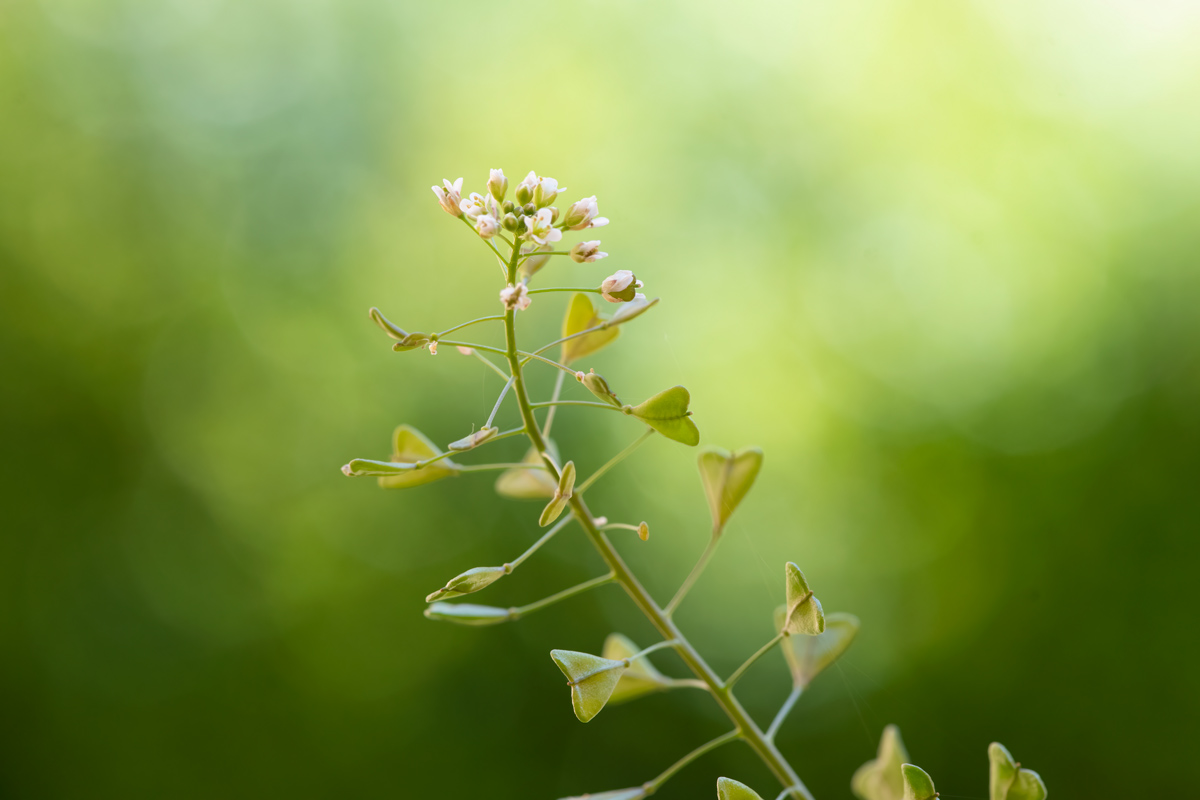
This perennial weed often stays green all winter with its dense rosette of elongated, hairy leaves that are sometimes tinted in maroon. Growth takes off in March and leads to late-spring flowering stems with yellow or orange/red blooms at the tips.
Lifecycle: Perennial weed
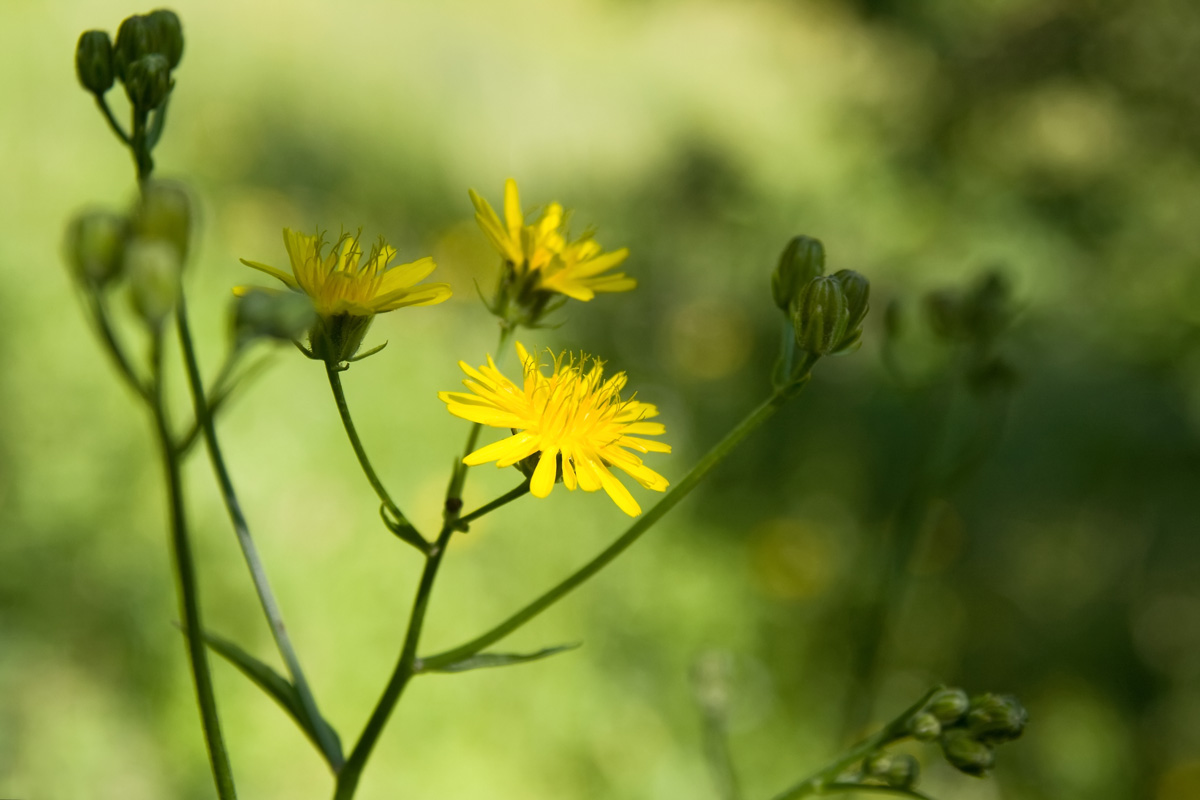
These attractive but free-seeding wildflower/weeds are most noticeable in mid to late spring when the glossy, heart-shaped foliage clumps send up five-petaled, purple-blue flowers.
Lifecycle: Perennial weed
Related article: How to Control Wild Violets
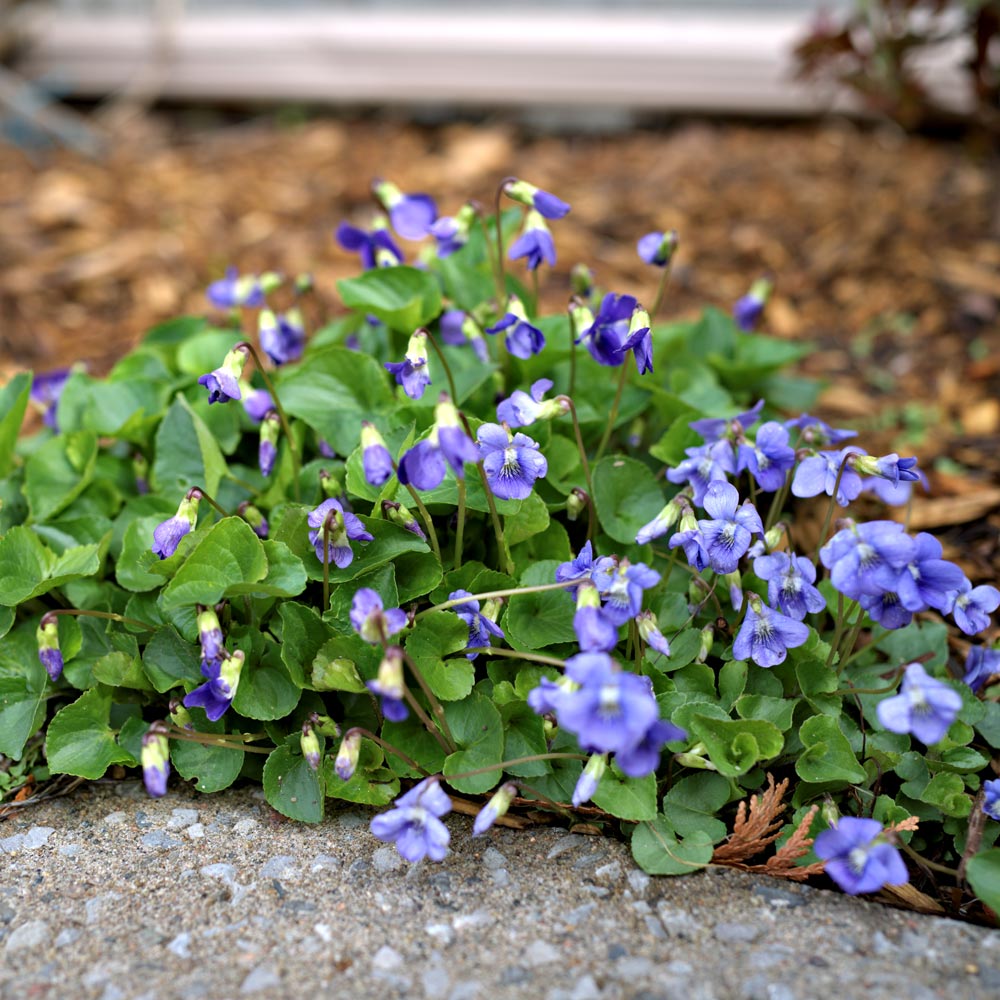
Also known as creeping Charlie, this low, spreading, mint-scented weed with the scalloped-edged leaves sends down roots as it creeps and produces small light-purple flowers in April and May.
Lifecycle: Perennial weed
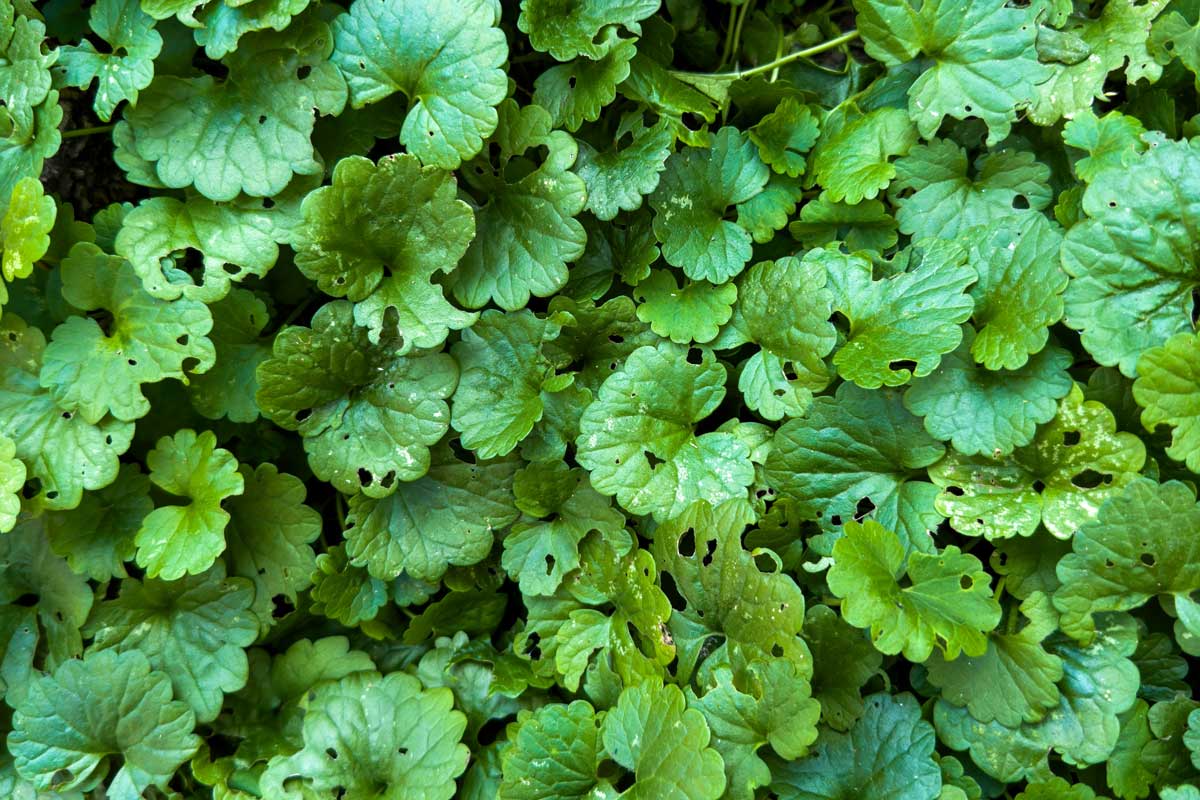
This weed is sometimes nicknamed the “Velcro plant” because of its fine hairs that stick to clothes, other plants, and pretty much anything. It quickly grows up and over neighboring plants in spring thanks to that grab-and-go trait. Leaves are light green, small, and narrow.
Lifecycle: Summer or winter annual weed
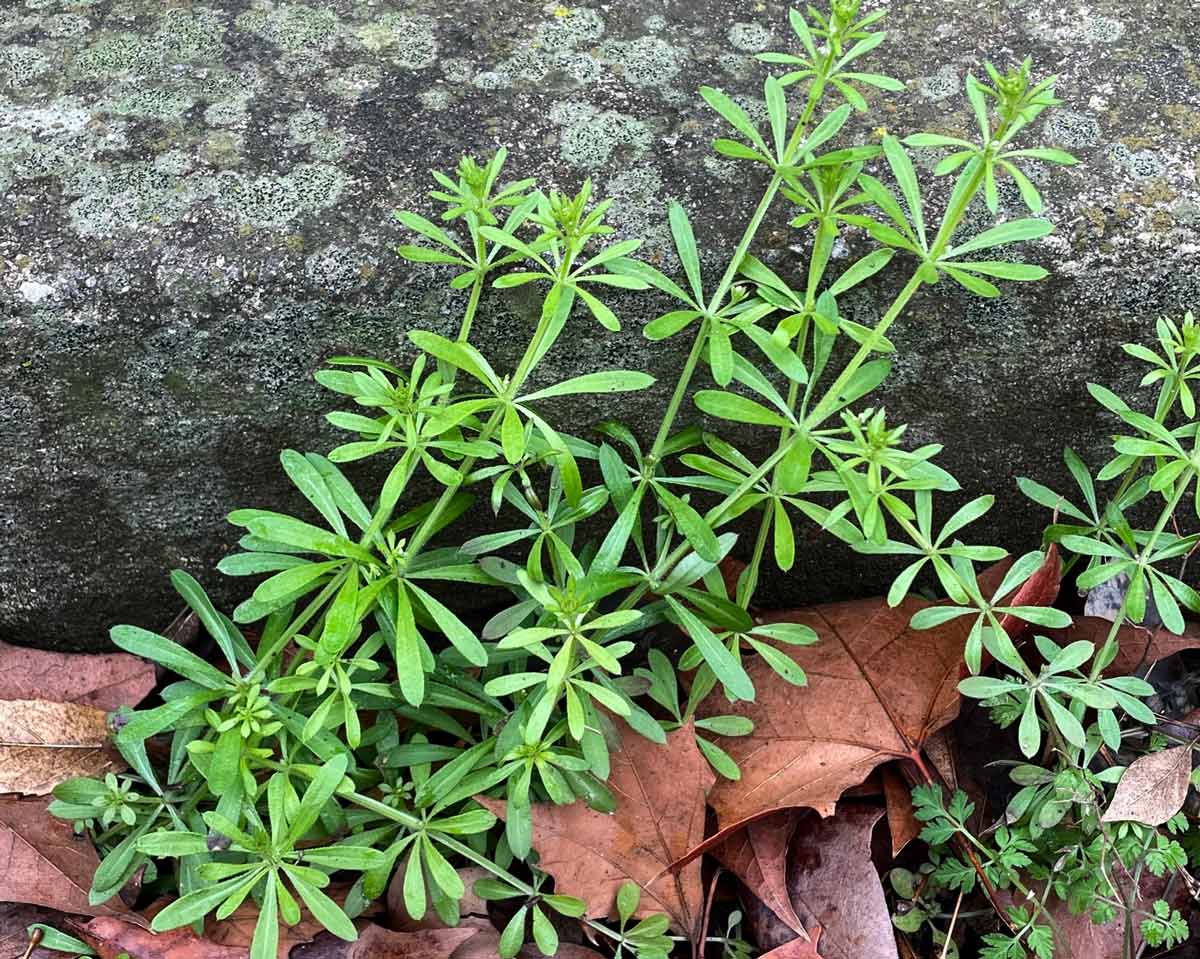
Watch for wiry, rooting-while-creeping, ground-hugging, three-leafed plants that produce small white flowers with yellow centers starting in April. The flowers mature into pea-sized red strawberry fruits by early summer.
Lifecycle: Perennial weed
Related article: How to Stop Wild Strawberries From Invading the Lawn
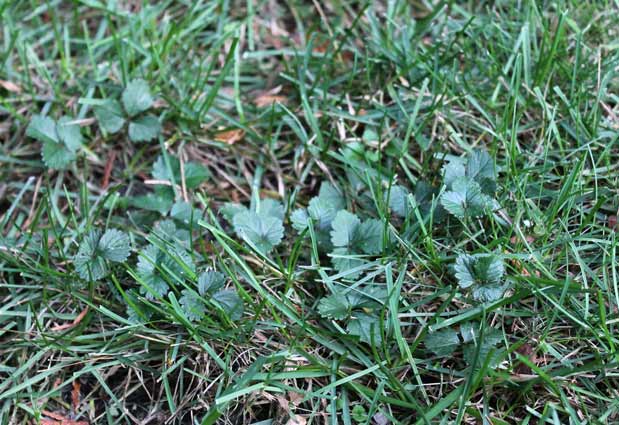
One of the most common “weed grasses,” goosegrass sprouts in April (a few weeks later than crabgrass) and quickly grows into thick-bladed low clumps that are white in color toward the base.
Lifecycle: Summer annual grassy weed
Related article: Grassy Weeds Hiding in Your Lawn
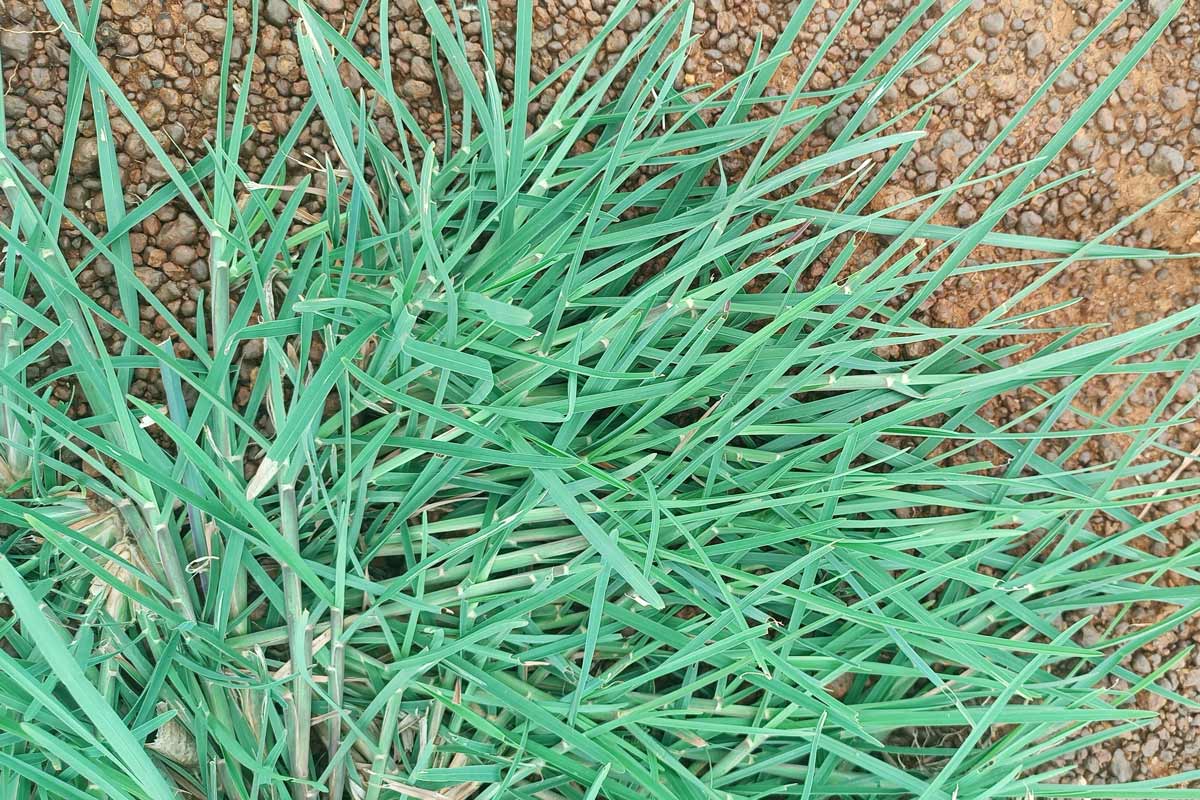
Look for the rounded, daisy-like golden flowers that end up with the familiar puffy seedheads at the top of bare stems.
Lifecycle: Perennial weed
Related article: Dandelion: America's Toughest, Most Invasive Weed
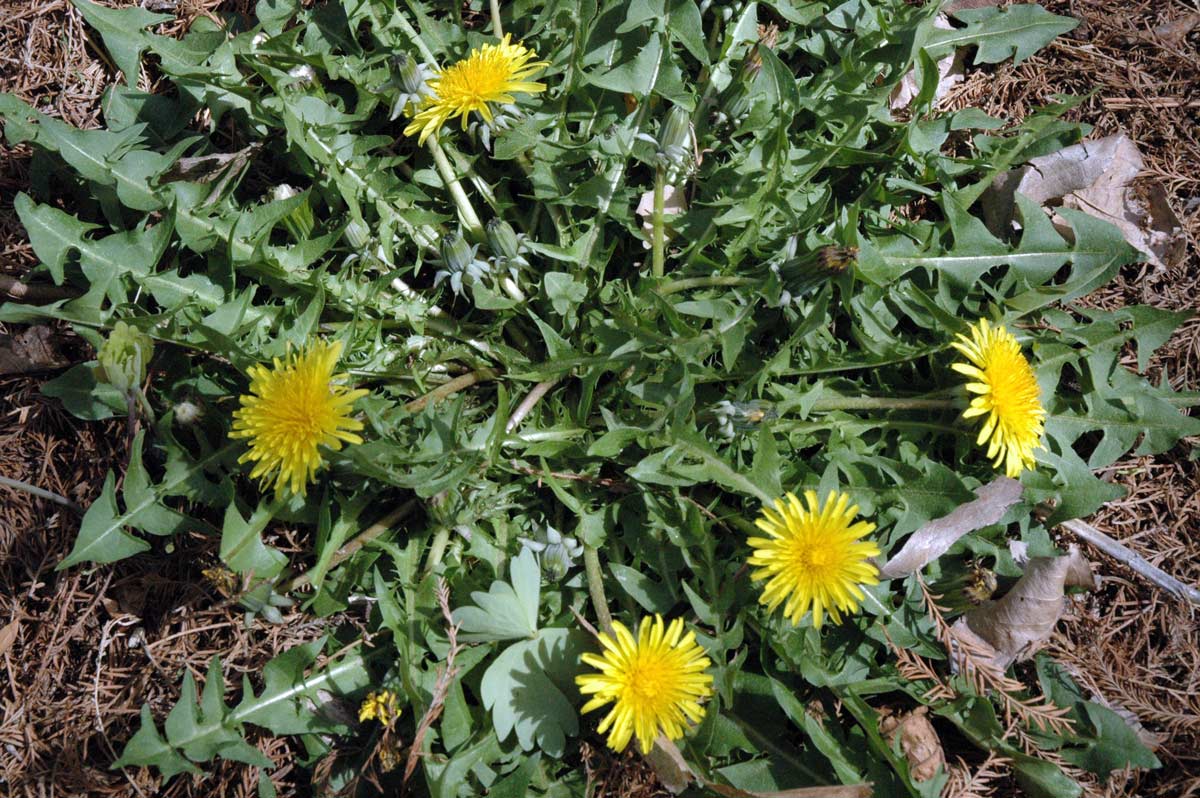
Plants grow three to four feet tall and produce four-petaled white flowers in May. Sniff a crushed leaf or stem to nail down the ID via a garlic odor.
Lifecycle: Biennial weed
Related article: How to Control Garlic Mustard
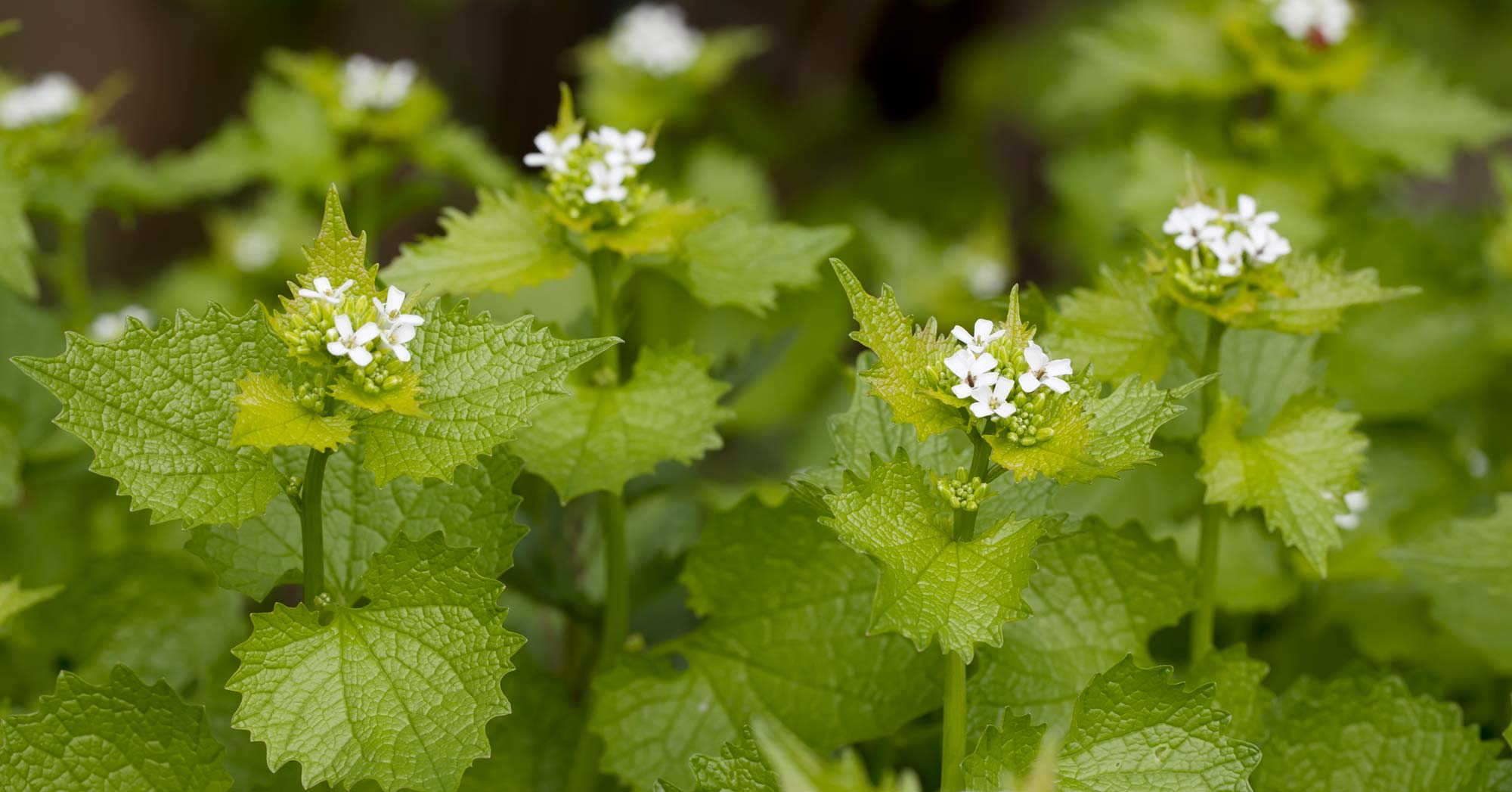
One of the hardest weeds to kill, goutweed is a foot-tall carrot-family plant with pointed oval leaves and umbrella-shaped white flower clusters in May and June.
Lifecycle: Perennial weed
Related article: How to Control Goutweed
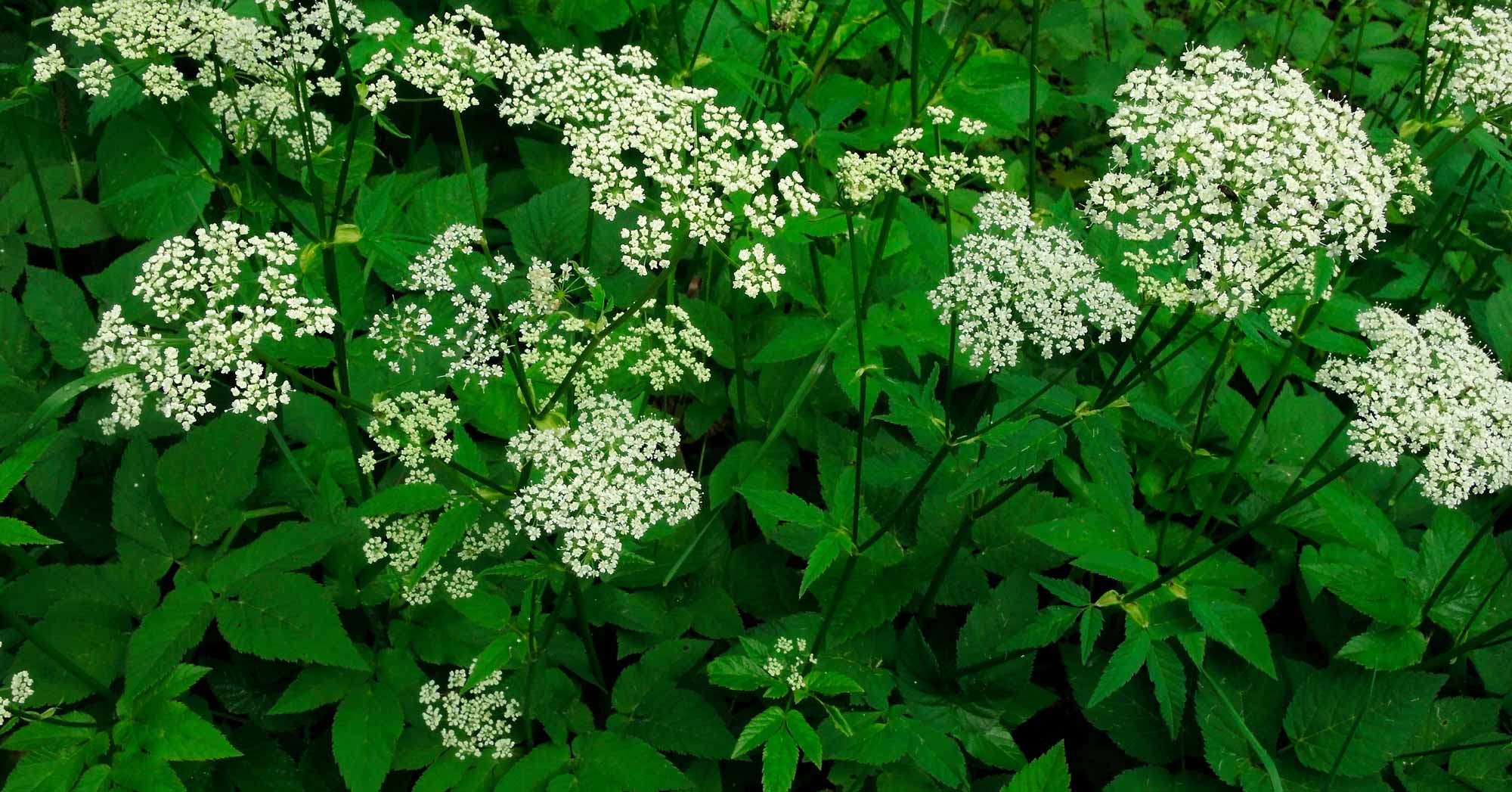
Often mistaken for clover, yellow woodsorrel does have shamrock-style leaves, only smaller than clover. The short plants also bloom yellow instead of white, starting in May and running into summer.
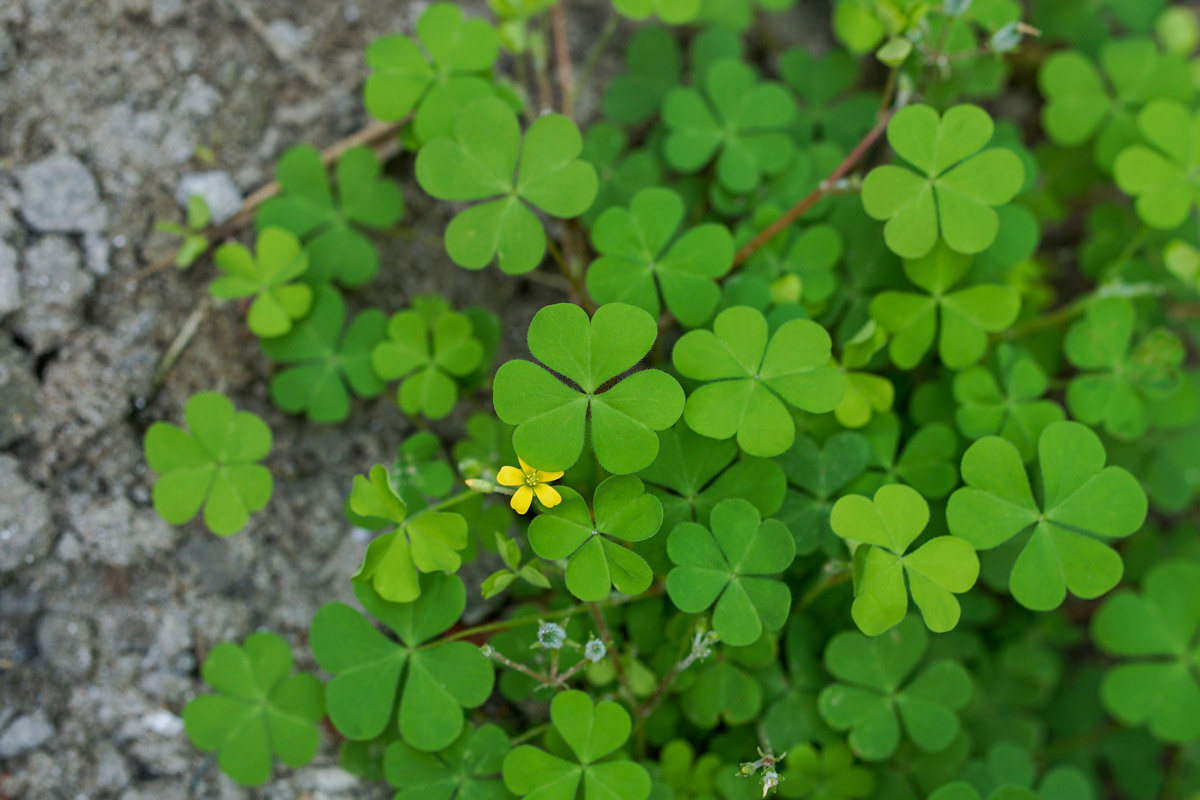
This is a weed worth knowing because it’s a potent skin irritant if you touch it. Look for their flat-topped, umbrella-like, yellow flower clusters that bloom atop three- to five-foot-tall plants from late spring through summer.
Lifecycle: Biennial weed
Related article: How to Control Wild Parsnip
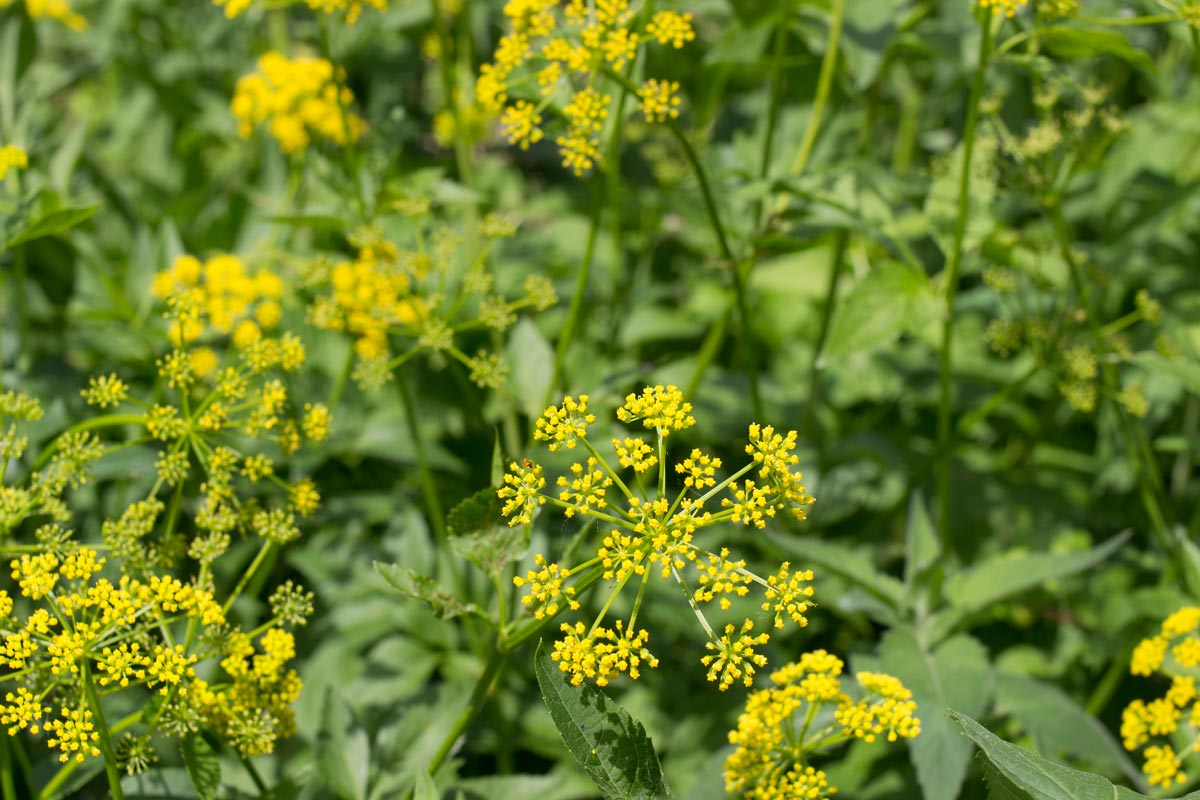
One of the most toxic plants to ingest or touch, poison hemlock is blatantly obvious in June with its tall (six-foot) stems that are topped with white umbrella-like flowers. The hollow stems have purple blotches on them, and the foliage is fern-like.
Lifecycle: Biennial weed
Related article: Weeds That Hurt Us
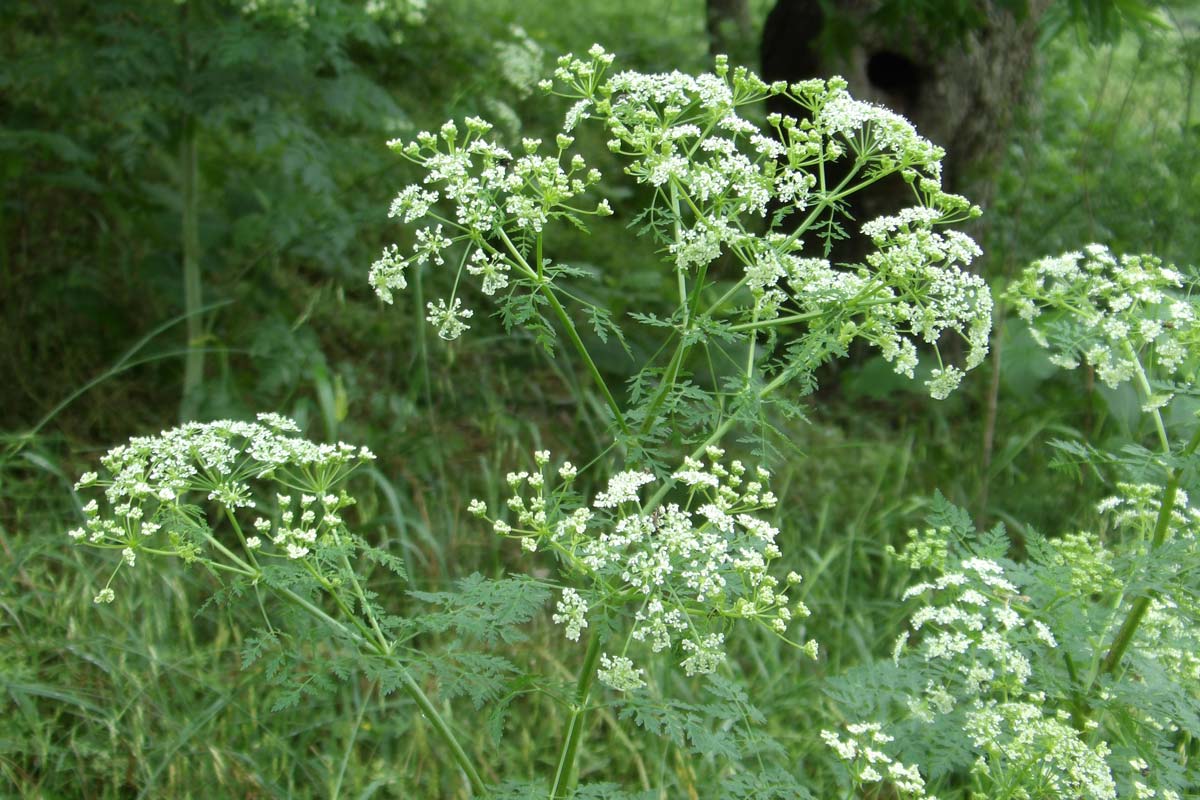
A foot-tall reseeding machine, hairy galinsoga is most distinctive for its small, daisy-like flowers with white petals and yellow centers that can produce throughout summer. Leaves are lance-shaped.
Lifecycle: Summer annual weed
Related article: How to Control Hairy Galinsoga
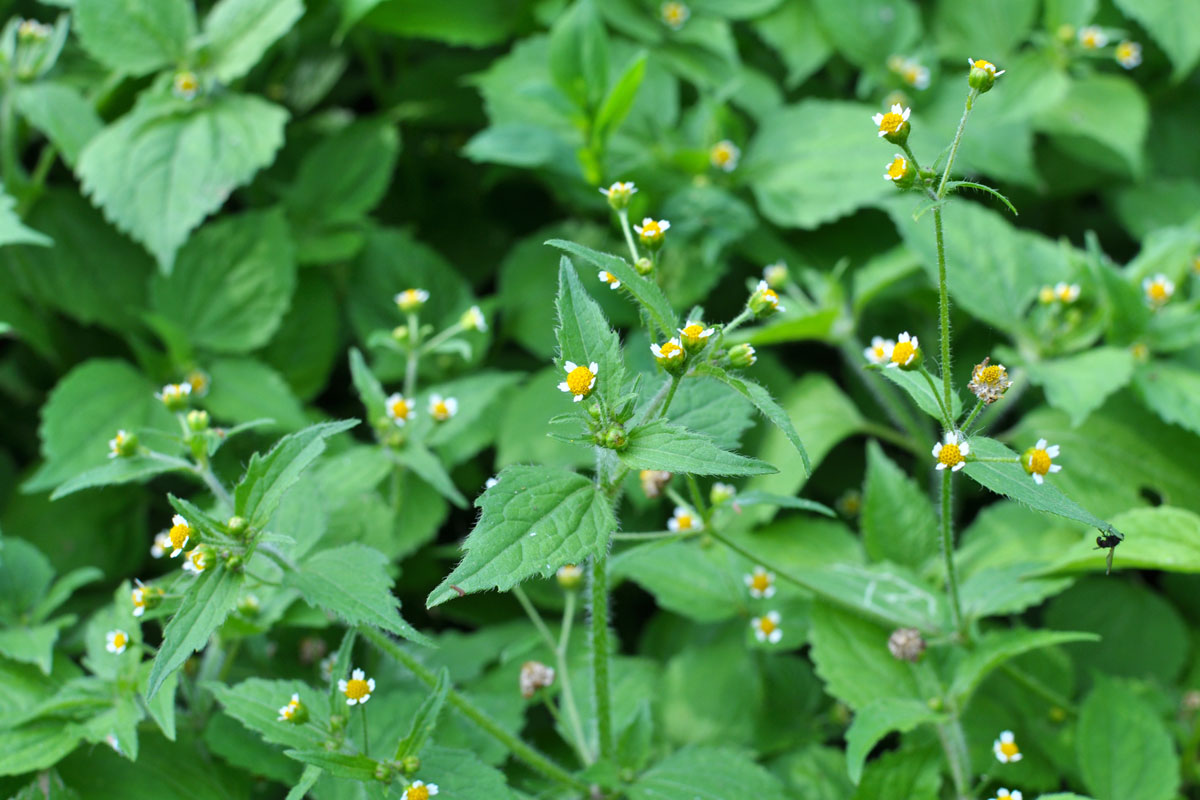
These cousins are both noticeable for the broad, hefty seed spikes that can rise up to four feet above a bush-like cluster of green leaves in June.
Lifecycle: Perennial weed with deep taproots
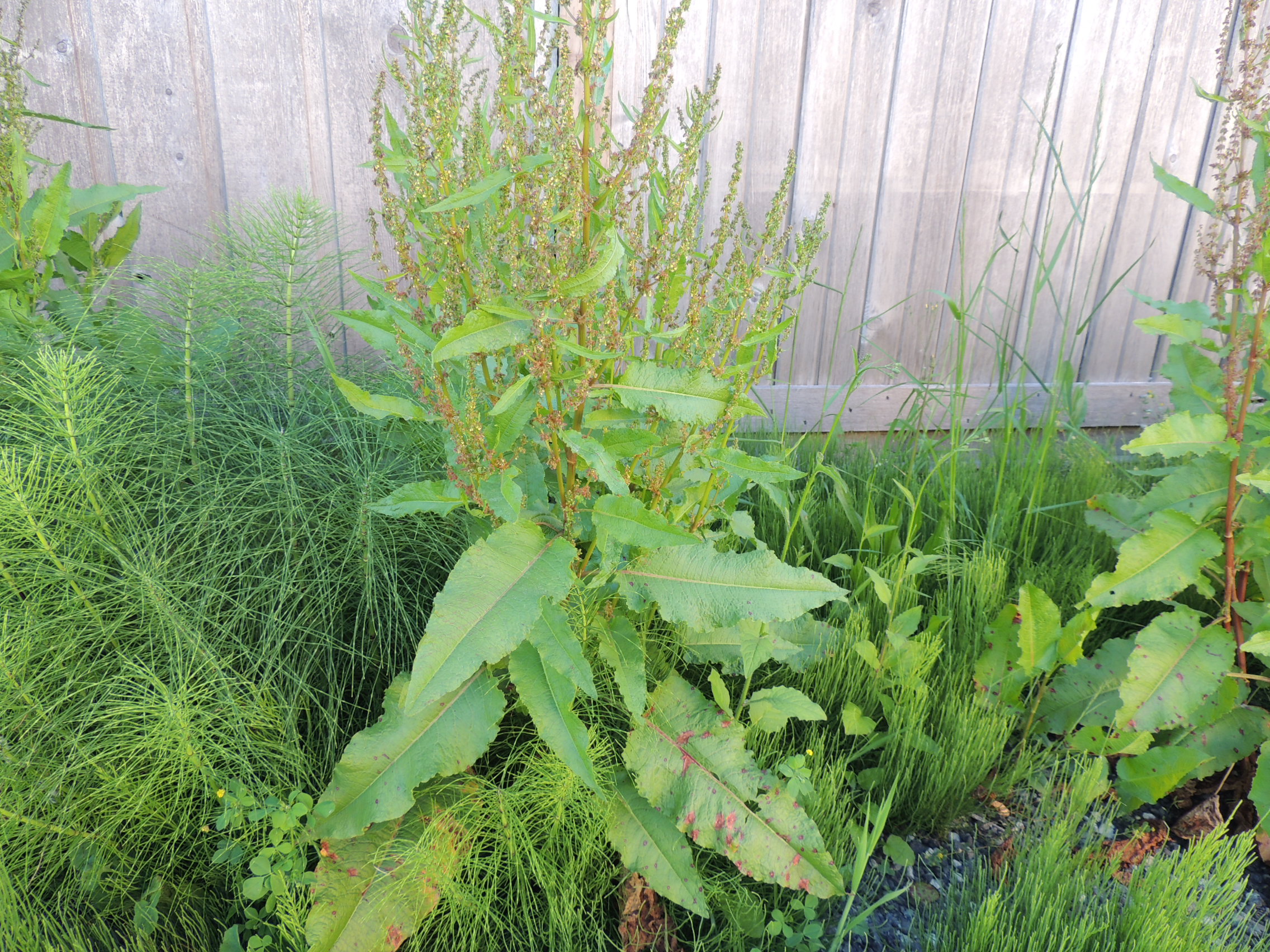
Two more cousins are easily recognized by their spiny stems that produce pin-cushion tufts of pink flowers at their tips, starting in June.
Lifecycle: Canada thistle is a perennial weed, bull thistle is a biennial
Related article: Thistle: Hard to Control Noxious Weeds
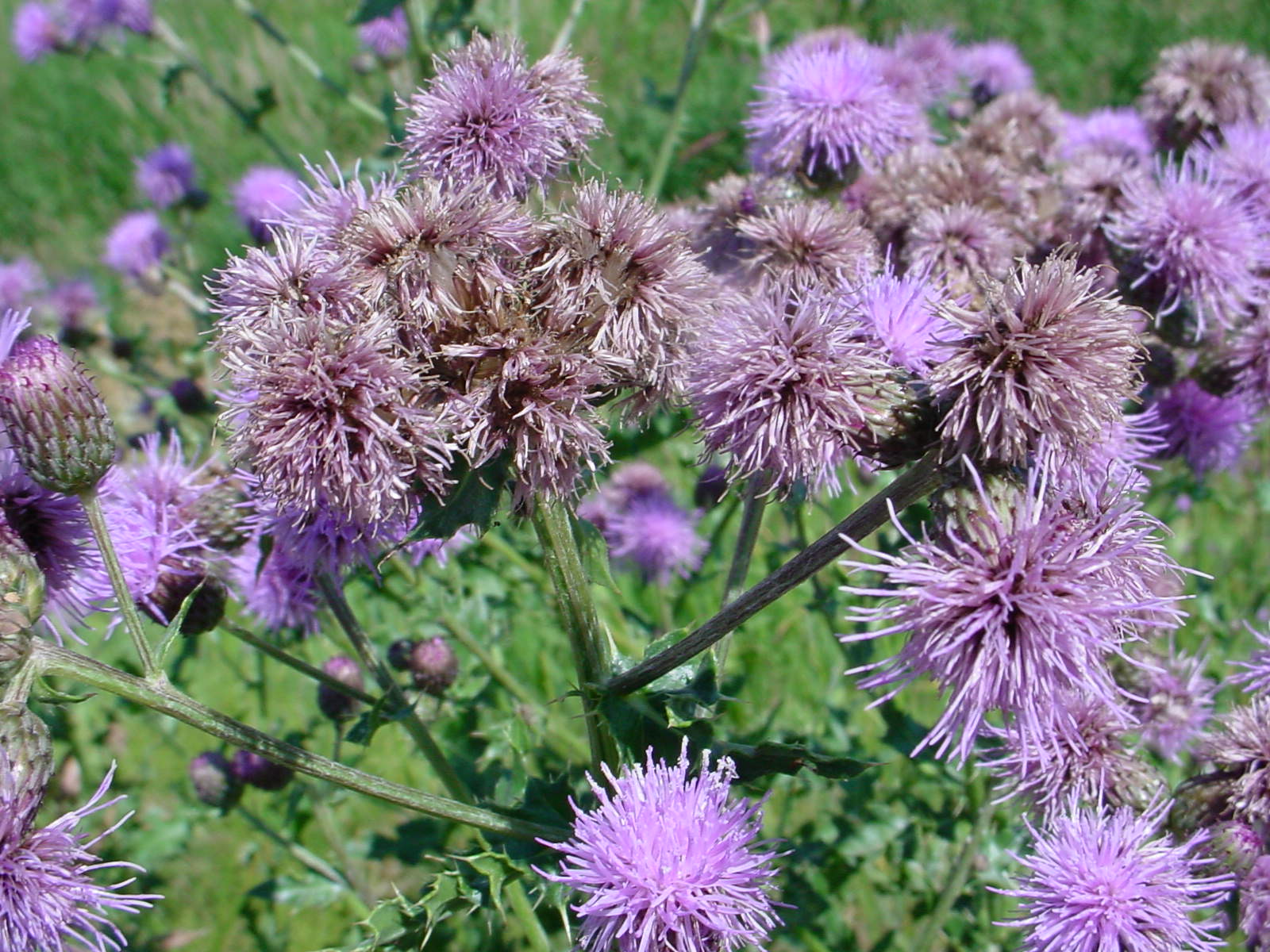
This fast-growing mat-former has small leaves and small golden-yellow flowers that start appearing in late June and last for weeks in summer. It’s sometimes confused with yellow woodsorrel.
Lifecycle: Perennial weed
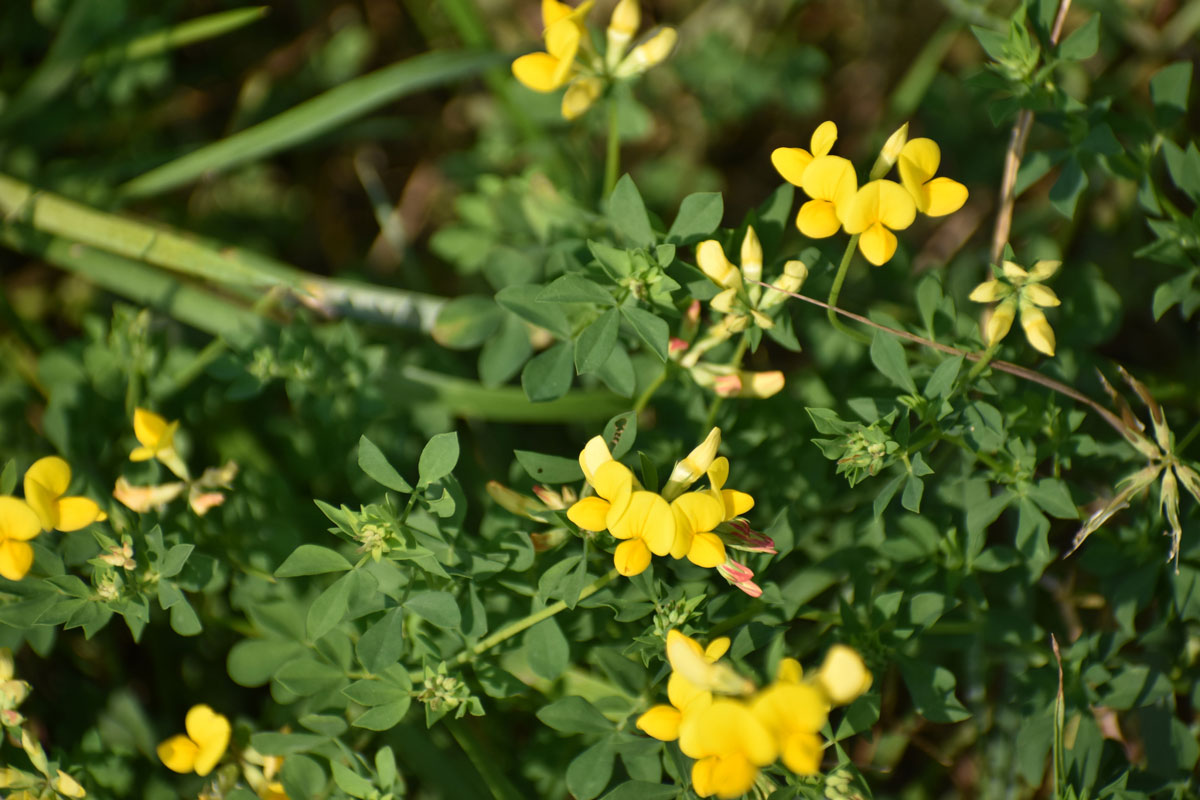
A hosta look-alike, plantain’s large leaves grow in an expanding rosette and then send up tell-tale slender seed spikes in July and August.
Lifecycle: Perennial weed
Related articles: How to Get Rid of Plantain in the Lawn and Broadleaf Plaintain: North America's Second Most Common Weed
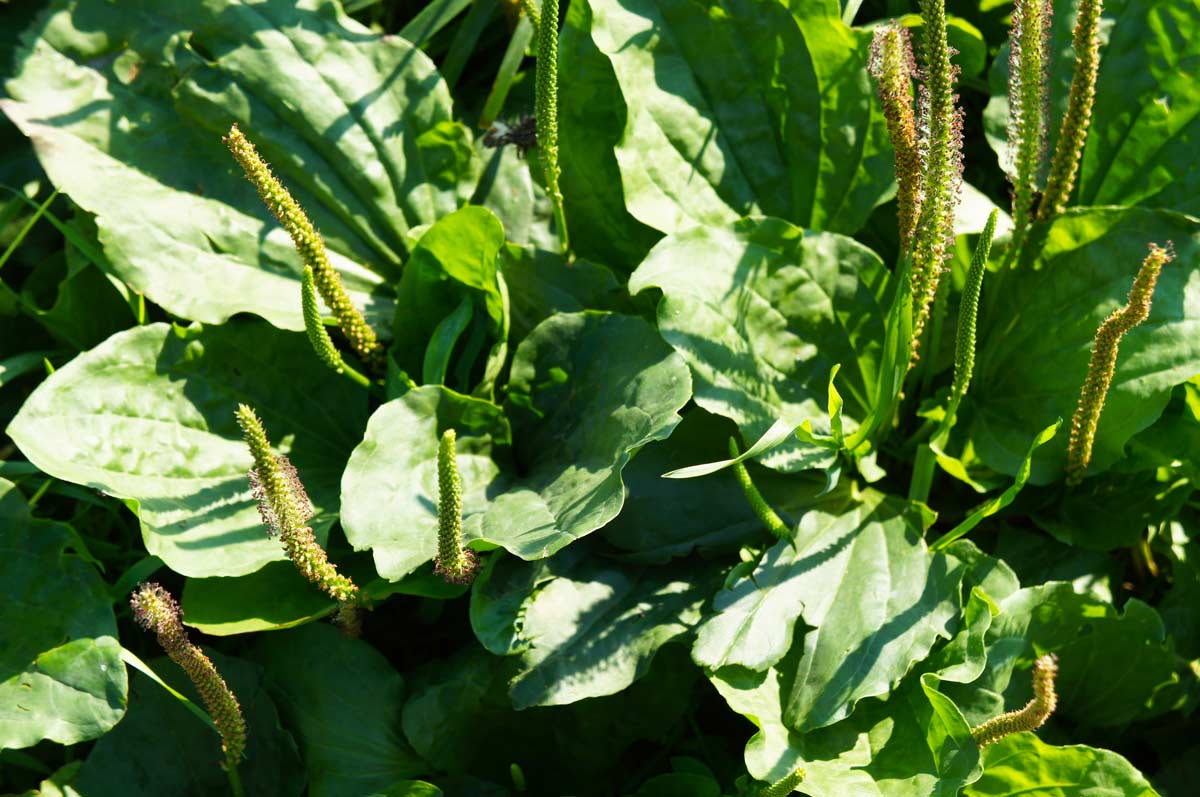
One of the most rampant-seeding weeds, lambsquarters are amaranth-family edibles that can grow three feet tall with tiny grayish-white flowers along the upright stalks in mid to late summer.
Lifecycle: Summer annual weed
Related article: How to Control Lambsquarters
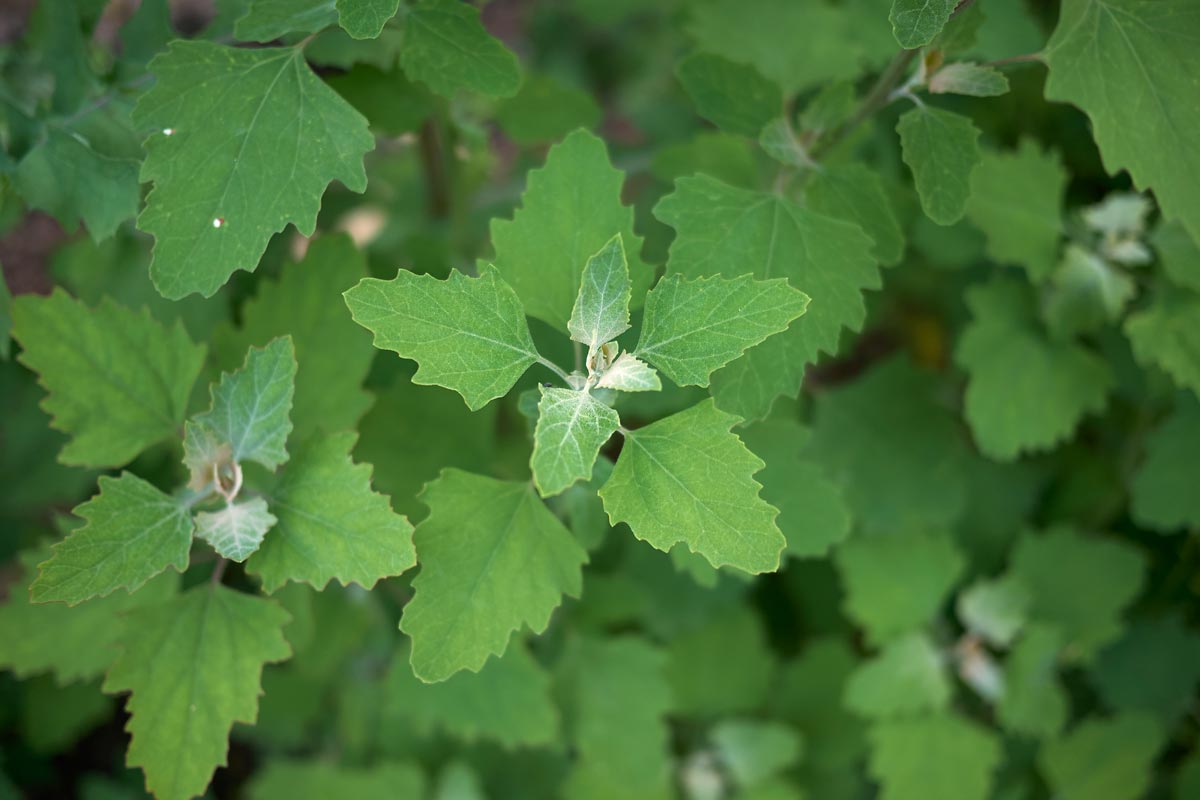
Upright, bushy plants can reach two to three feet tall. Small, greenish-white, cone-shaped flowers emerge from around the leafy clusters throughout summer. A tell-tale ID trait is that the base of the stems is red.
Lifecycle: Summer annual weed
Related article: How to Control Redroot Pigweed
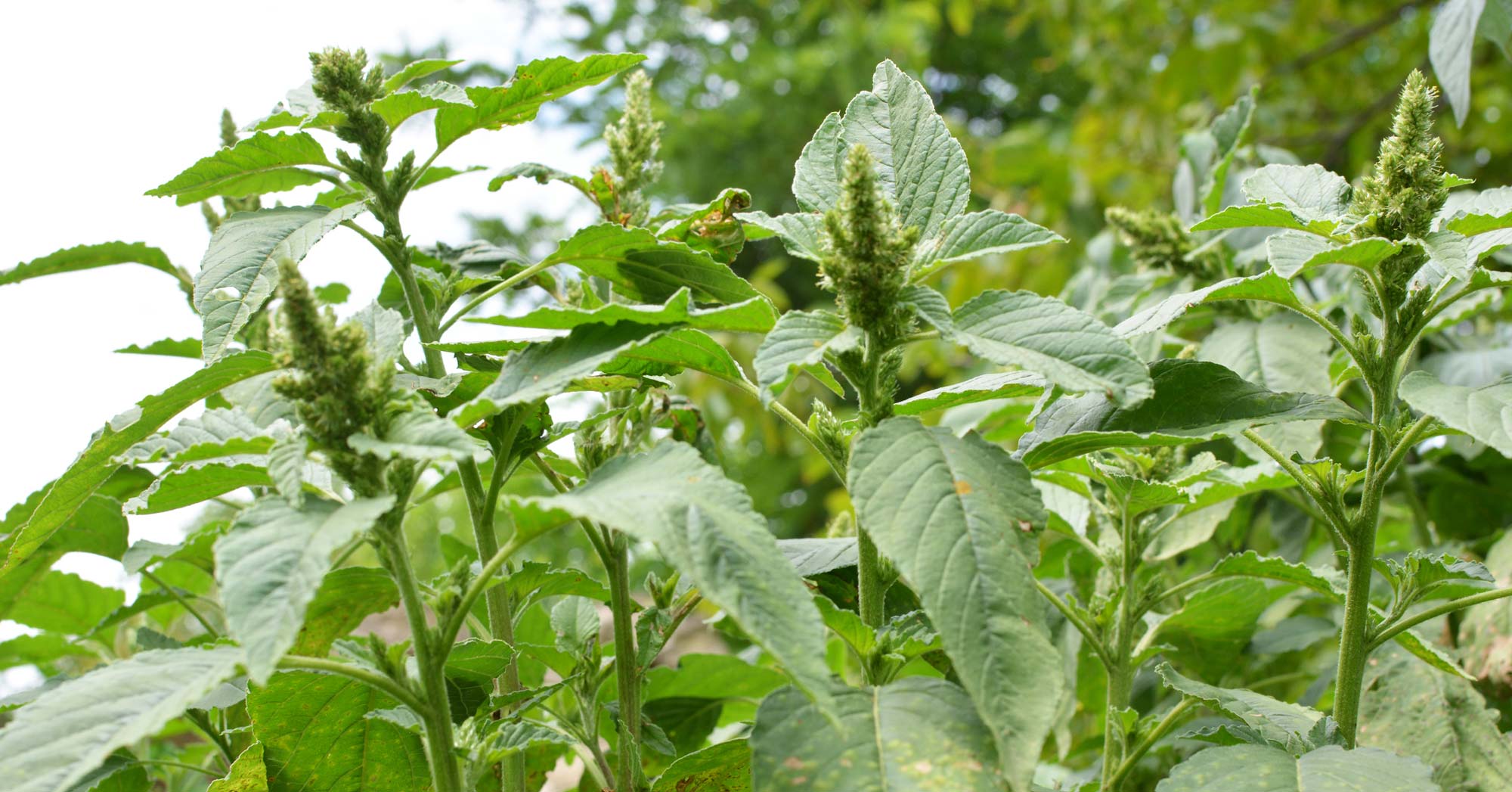
This mat-forming creeper is distinctive for its glossy, succulent little leaves, its maroon-tinted stems, and its tiny yellow flowers that form in the middle of the leaf clusters.
Lifecycle: Summer annual weed
Related article: How to Control Purslane
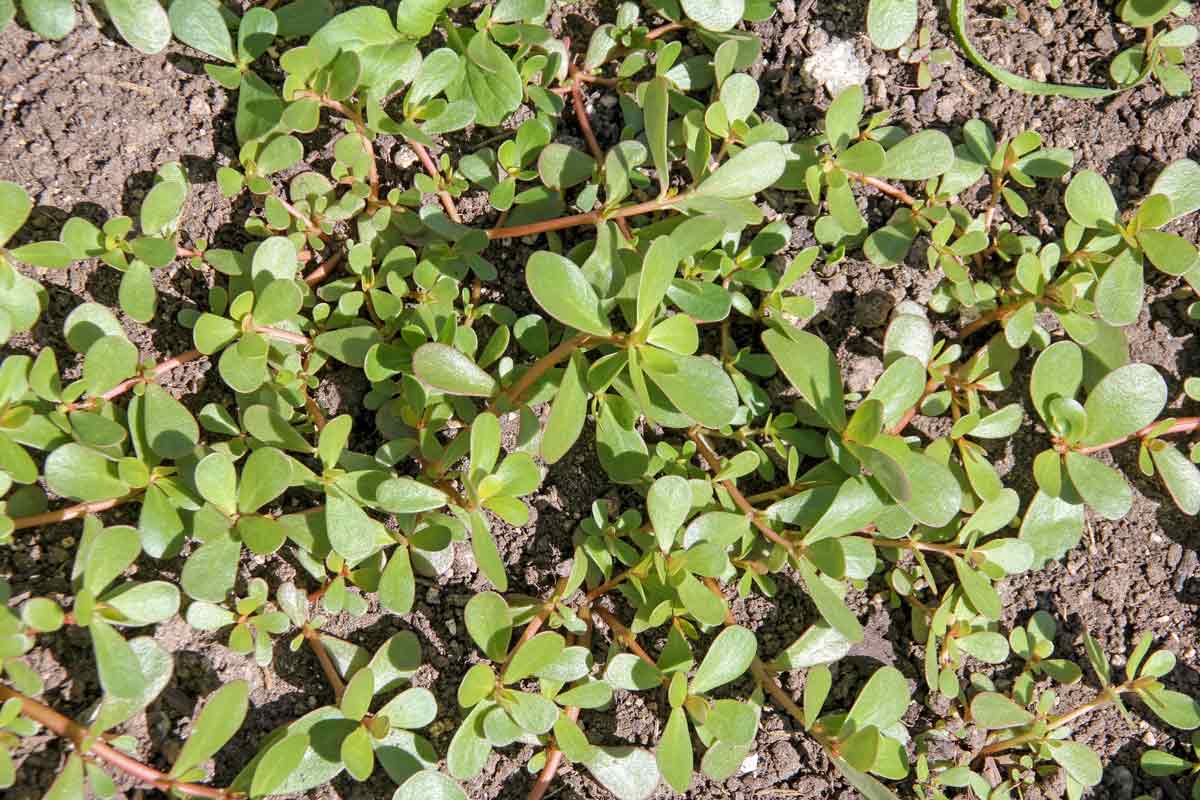
The blue flowers atop wiry stems from July through September are the tell-tale identifier of this weed that tolerates the worst of soils. Leaves grow in a rosette and are long and scallop-edged.
Lifecycle: Perennial weed
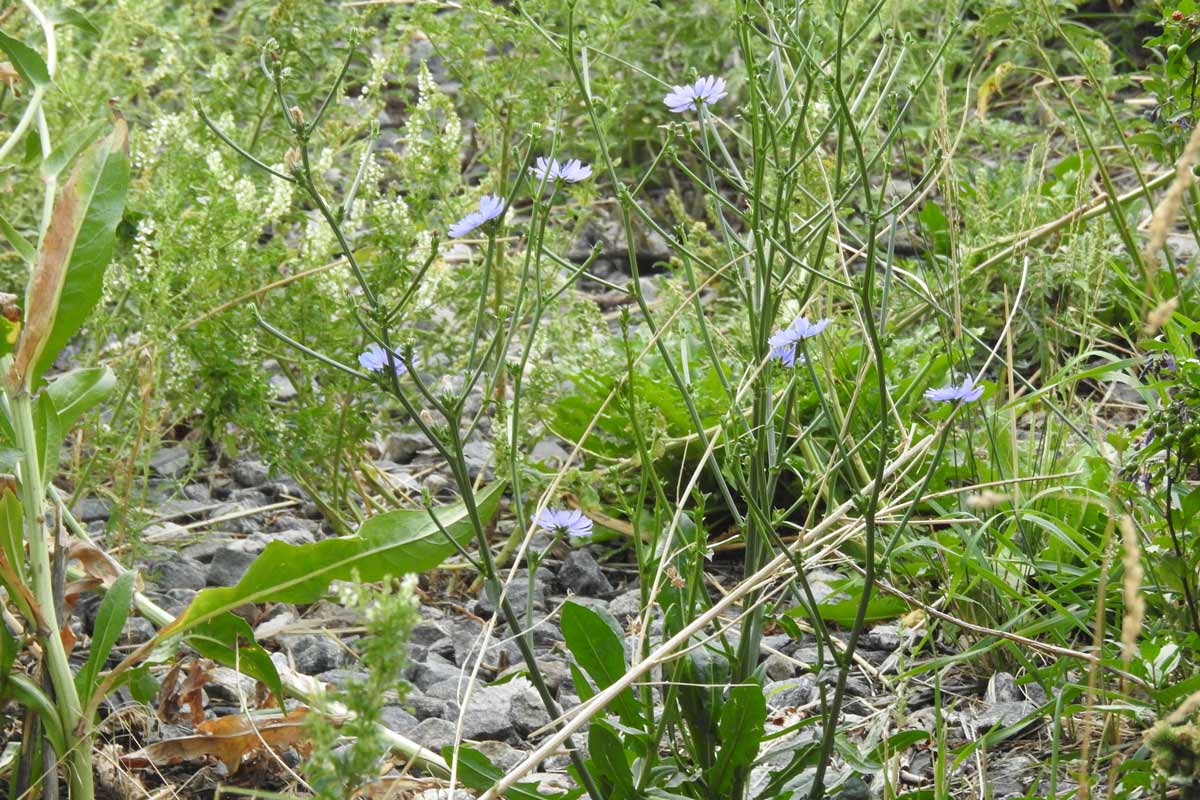
A vining weed with arrowhead-shaped leaves, bindweed is most distinctive for its white, trumpet-shaped flowers that remind people of morning glories. Flowers can appear as early as June and continue throughout summer.
Lifecycle: Perennial weed
Related article: How to Control Field Bindweed
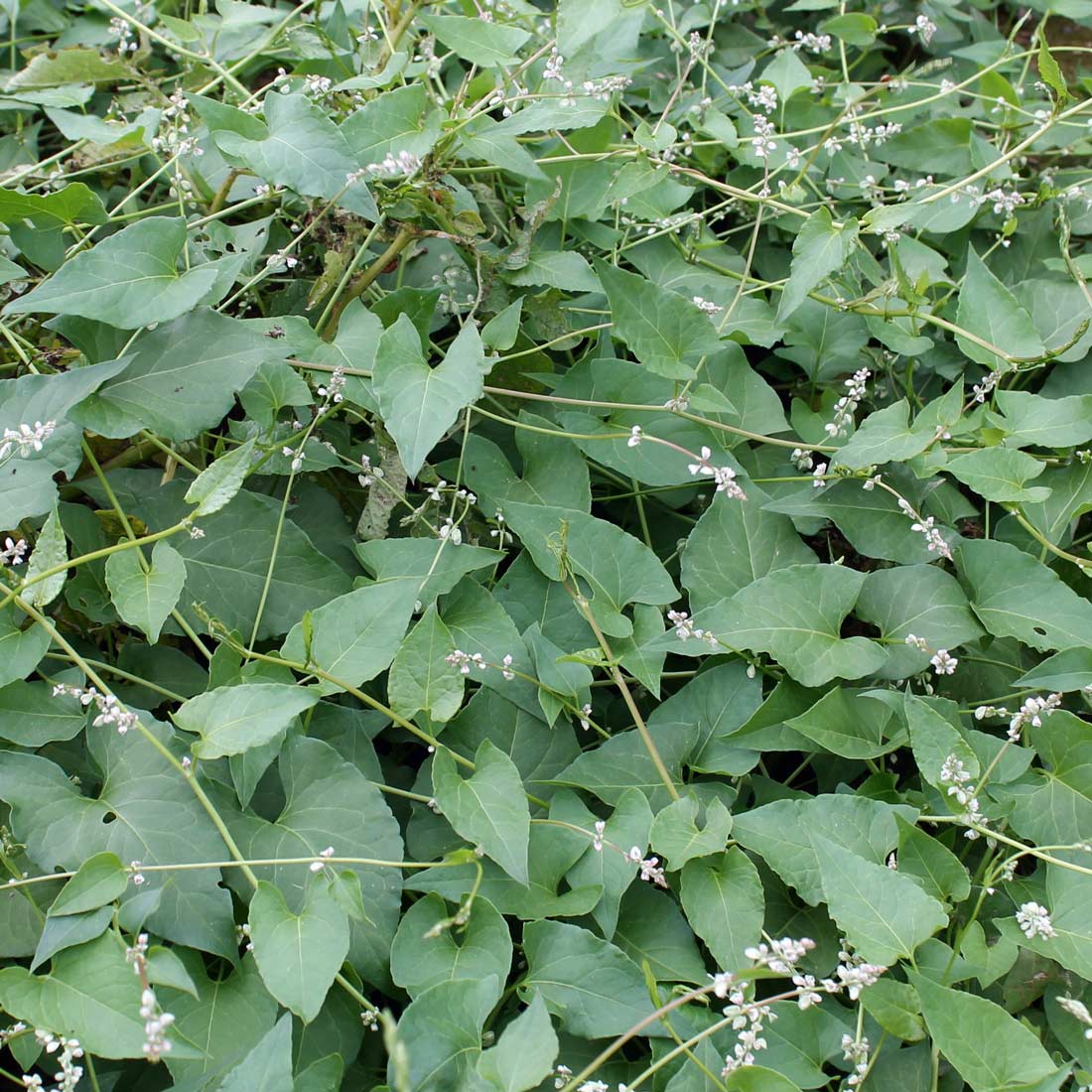
Tall, hollow stems emerge from clumps of fern-leafed foliage to produce large, flat, umbrella-shaped white flower clusters in mid to late summer.
Lifecycle: Biennial weed
Related article: How to Control Wild Carrot
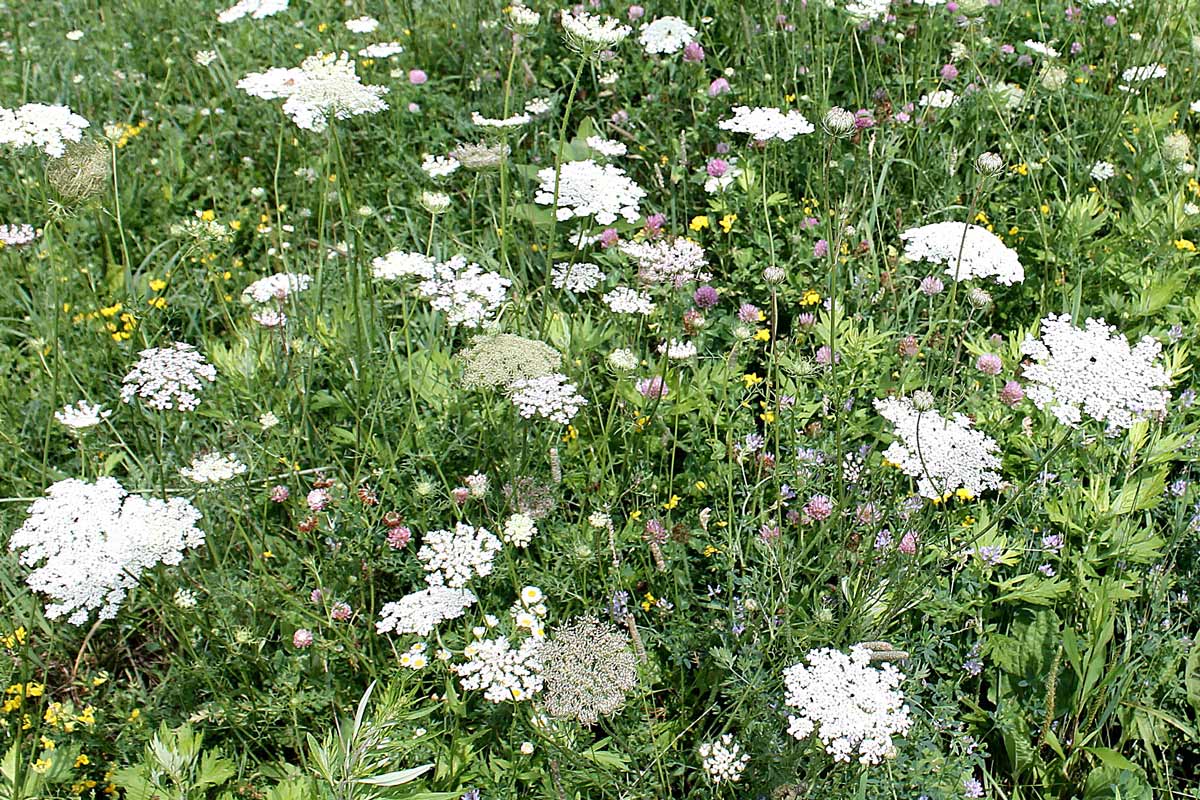
This free-seeding native is easiest to recognize by its inch-long pink flower spikes that grow atop short clumps of lance-shaped leaves in late summer.
Lifecycle: Summer annual weed
Related article: How to Control Pennsylvania Smartweed
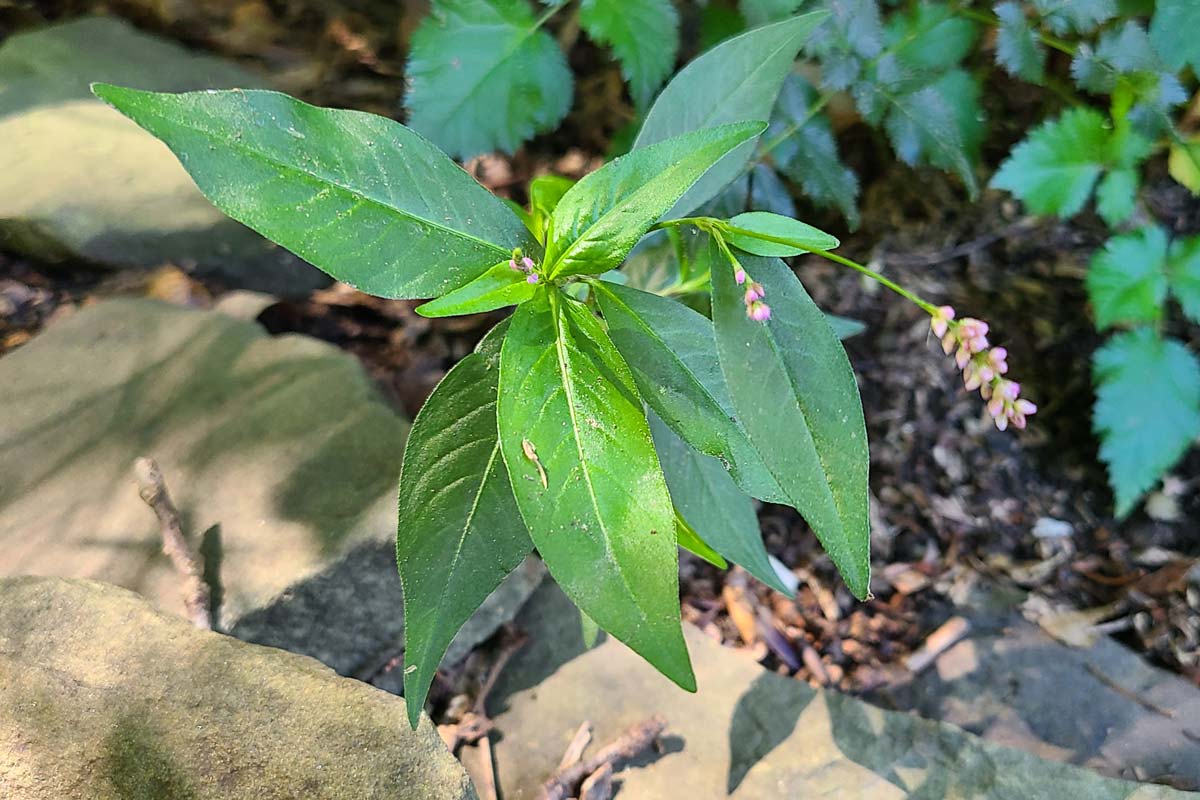
Spurges are ground-hugging summer weeds with small, oval leaves that grow in rows along the stems. Leaves usually have dark-purple splotches, and when broken, the stems emit a white, milky sap.
Lifecycle: Summer annual weed
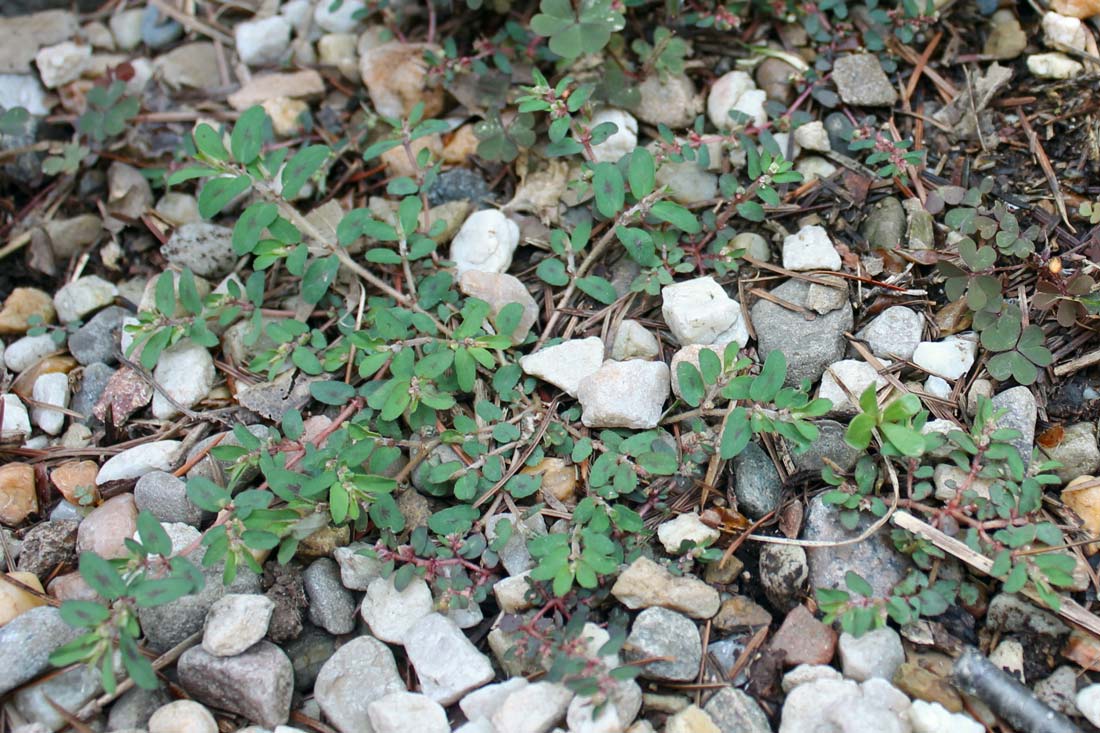
The long, narrow leaves of this upright weed have prickly edges, and the mid- to late-summer yellow flowers at the top of the three- to four-foot-tall stems resemble small dandelions.
Lifecycle: Biennial or winter annual weed
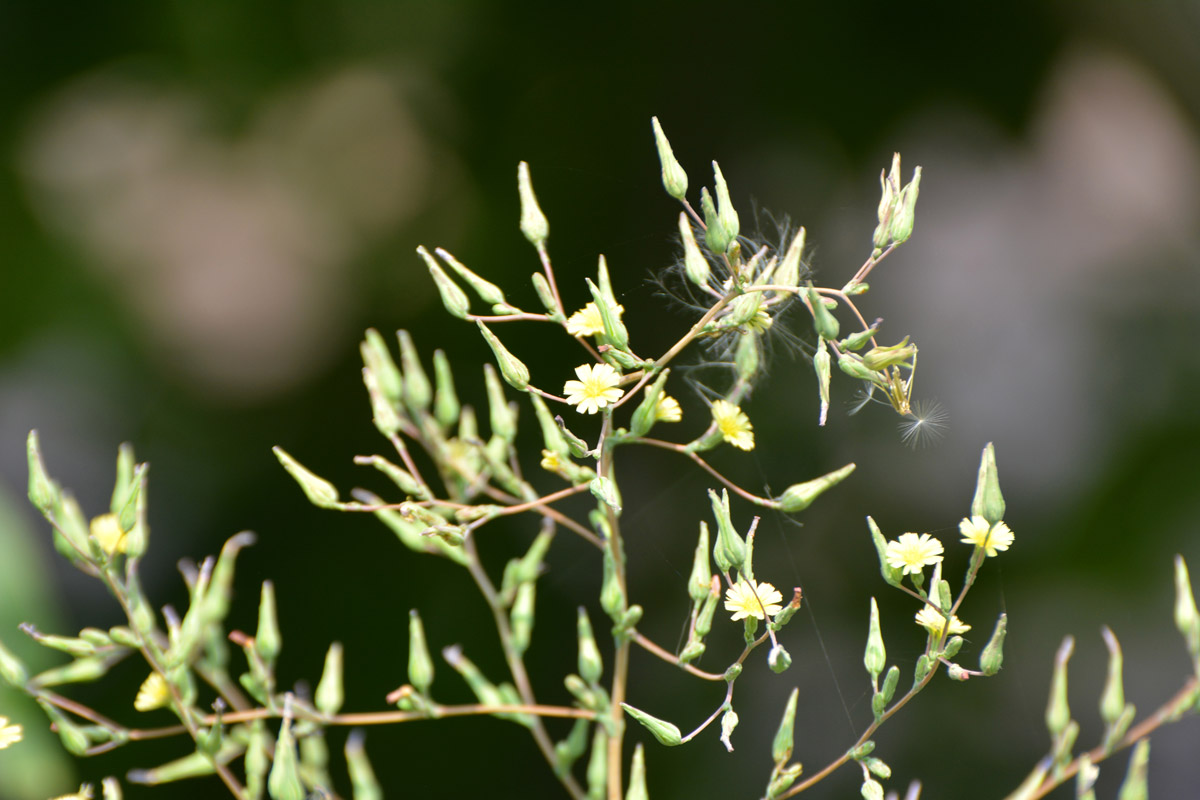
This grassy invader of lawns and garden beds hugs the ground with its wiry, horizontal stems. Although it sprouts in spring, crabgrass is most noticeable in late summer to early fall when it’s full-sized and sporting seedheads.
Lifecycle: Annual grassy weed
Related article: Crabgrass: A Seedy Invader of Thin Lawns
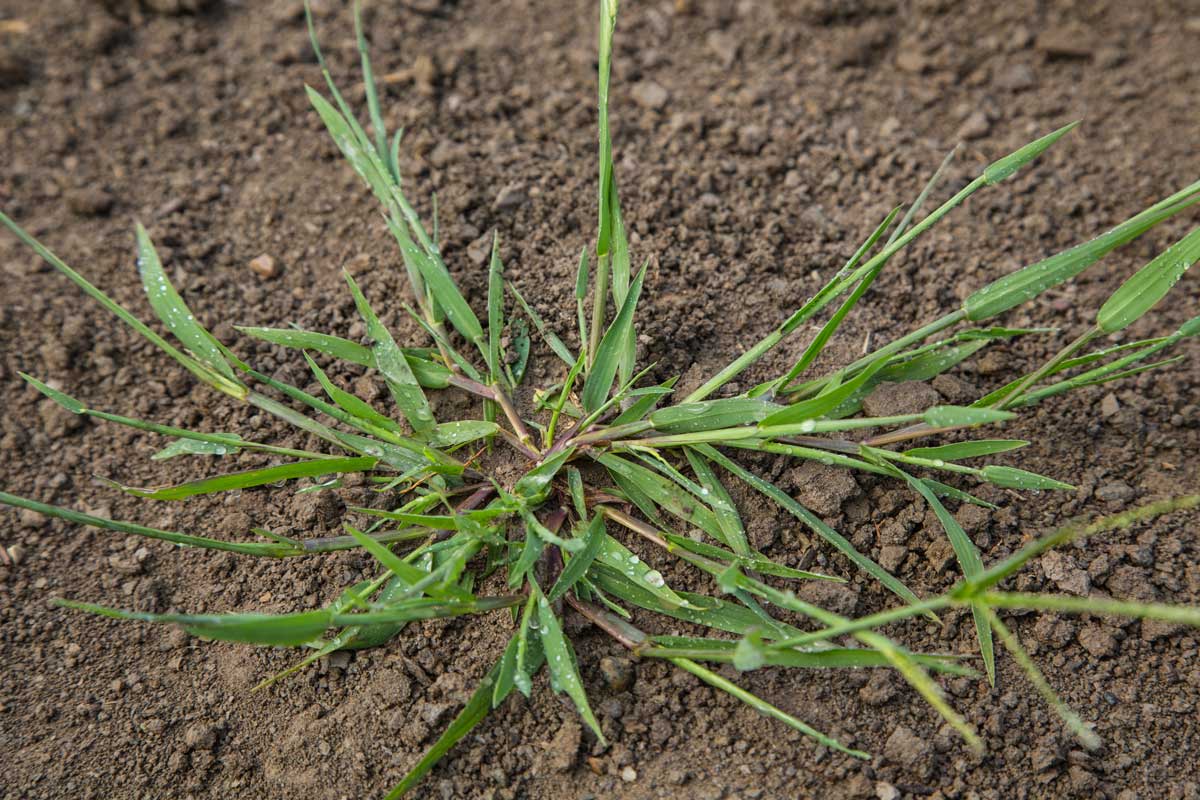
Your nose might detect this one more so than your eyes. Ragweed plants grow about a foot tall with fern-like leaves and send up late-summer greenish flowers and seed stalks that aren’t as showy as goldenrod, which blooms at the same time and takes ragweed’s rap for sneeze-causing.
Lifecycle: Summer annual weed
Related article: How to Control Ragweed
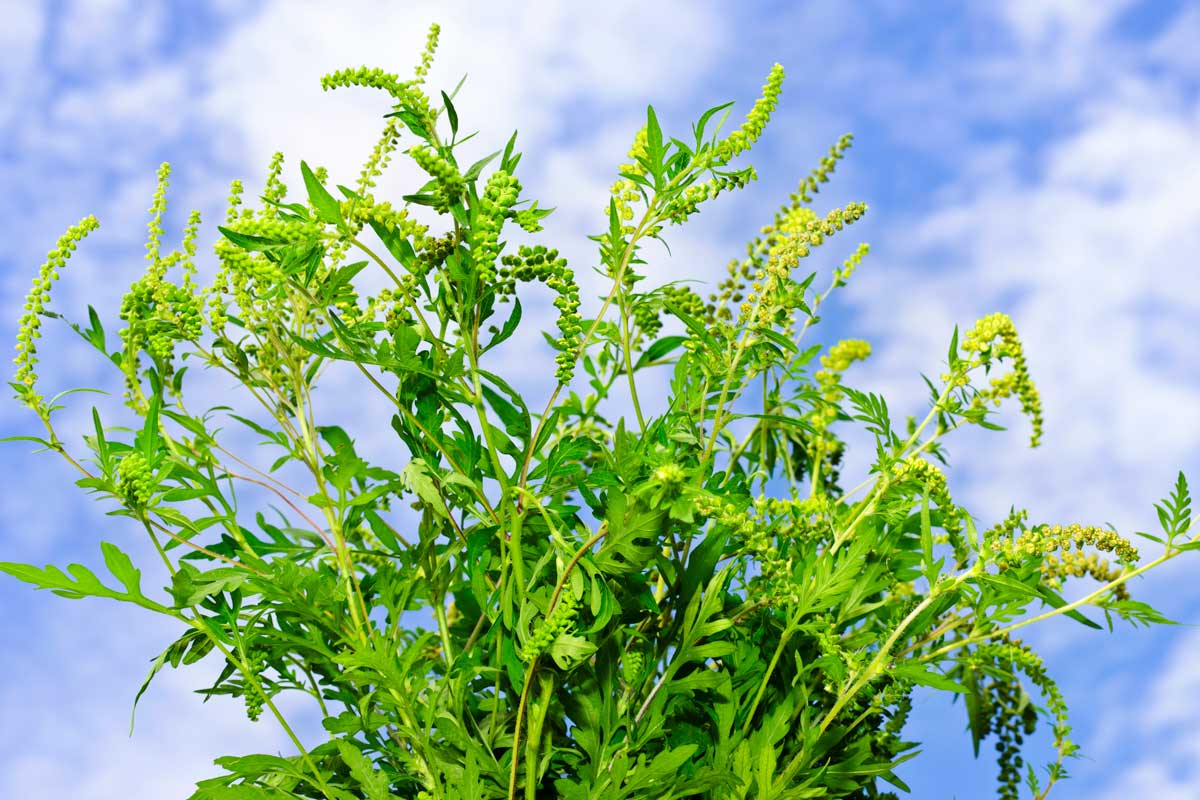
While the rampant, loose, vining habit of kudzu’s dense, oval-shaped foliage is noticeable all season, a further give-away comes in late summer when the plants produce arching, tail-like spikes (“racemes”) with teeny reddish-purple flowers.
Lifecycle: Perennial vine
Related article: Kudzu
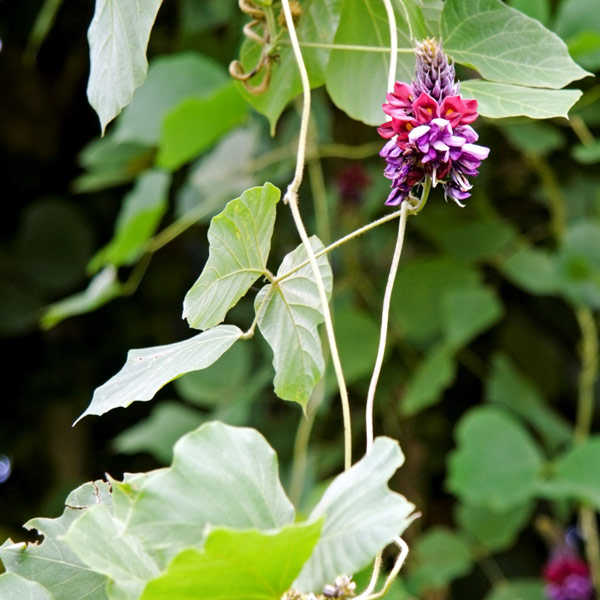
Plants start out looking like mums, but then stems shoot up four to five feet tall by late summer and don’t produce any conspicuous flowers.
Lifecycle: Perennial weed
This poisonous plant that can grow four to five feet tall has triangular leaves and pale lavender, star-shaped flowers that begin showing up in June. However, it’s most distinctive in late summer when the flowers mature into glossy black berries.
Lifecycle: Summer annual weed
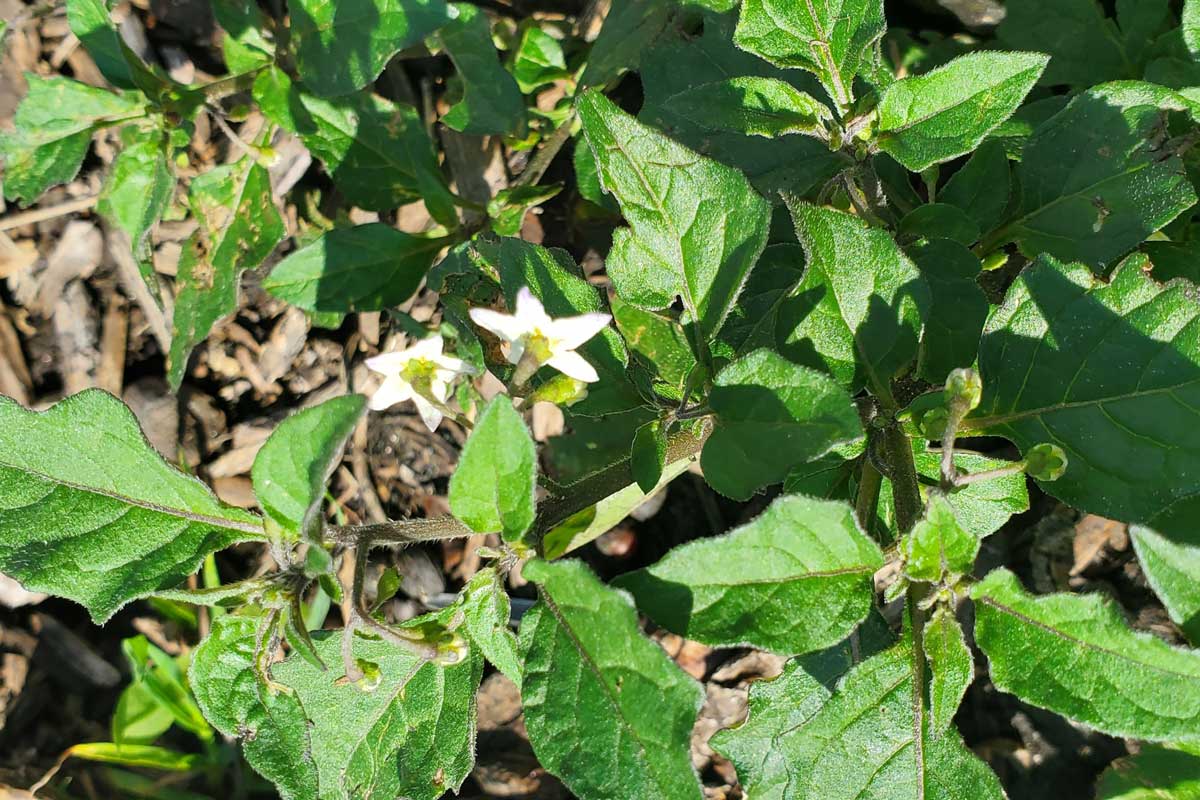
Although it’s a big and noticeable weed from early summer on, pokeweed is especially prominent in fall when the six- to eight-foot-tall tree-like weeds produce pea-sized fruits of dark burgundy.
Lifecycle: Perennial weed
Related article: How to Control Pokeweed
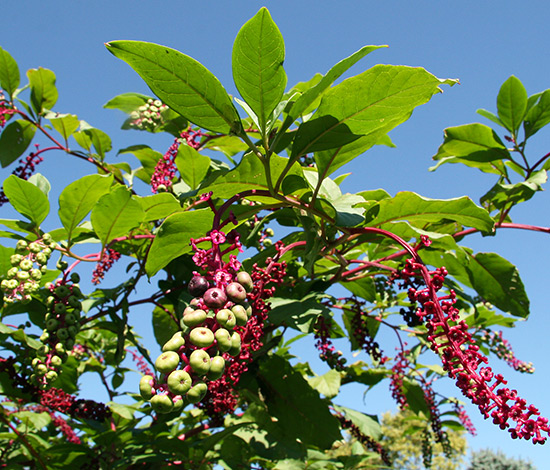
Another weed that’s active all growing season (and able to cause bad skin rashes even when dormant in winter), poison ivy is a vining weed that’s particularly showy in fall when its leaves turn shades of red, orange, and/or yellow and plants are ripening their small, waxy berries from white to red.
Lifecycle: Perennial woody vining weed
Related article: Poisonous Plants: Poison Ivy, Poison Oak, and Poison Sumac
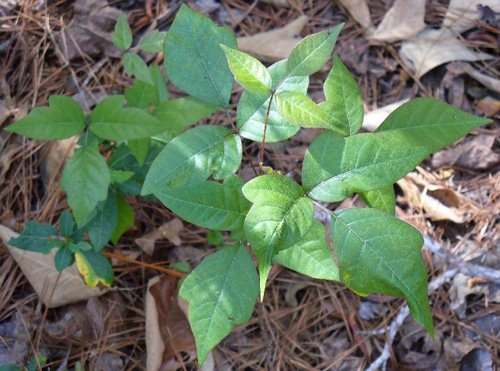
This vining weed is a super-spreader that’s distinctive all season for its arrow-head leaves and prickly stems, but it’s a dead give-away in fall when it produces small metallic-blue berries.
LIfecycle: Perennial vining weed
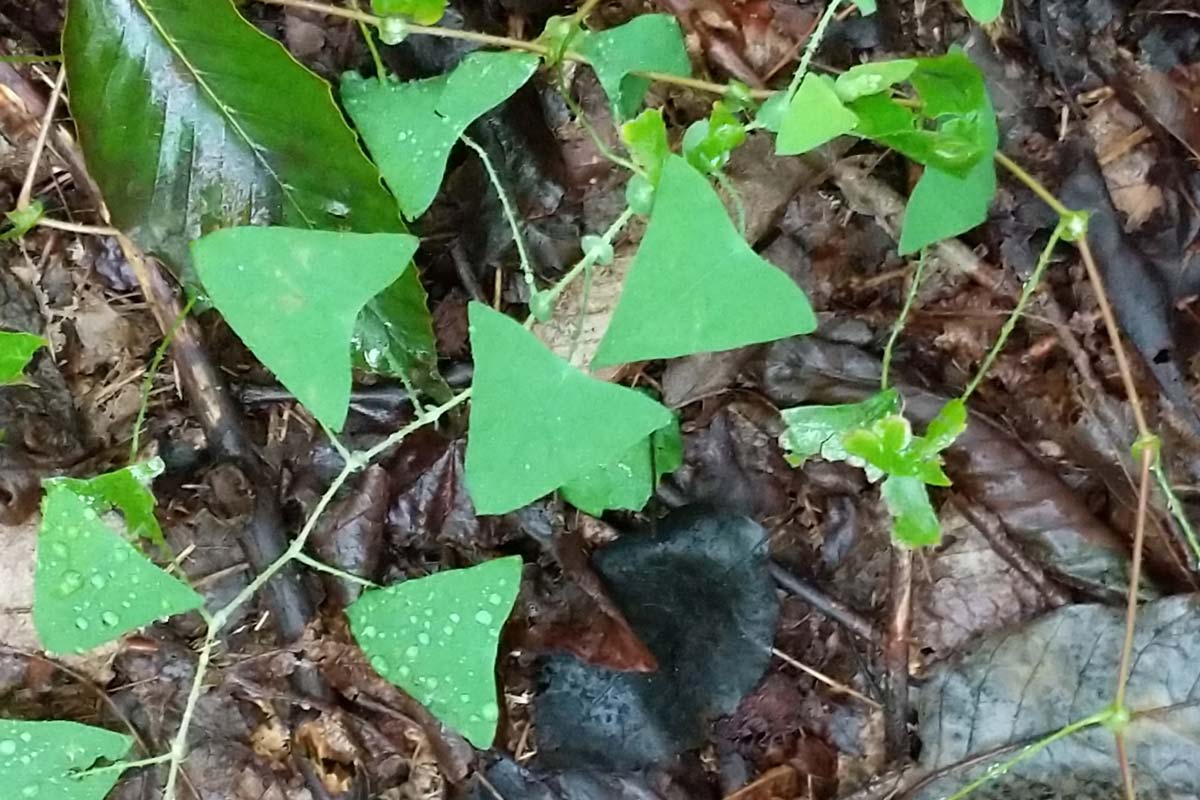
One of the biggest-leafed weeds you’ll find, velvetleaf can end up looking like a four- to five-foot tropical tree at full maturity by season’s end, when it drops its seed from mature yellow late-summer flowers.
Lifecycle: Summer annual weed
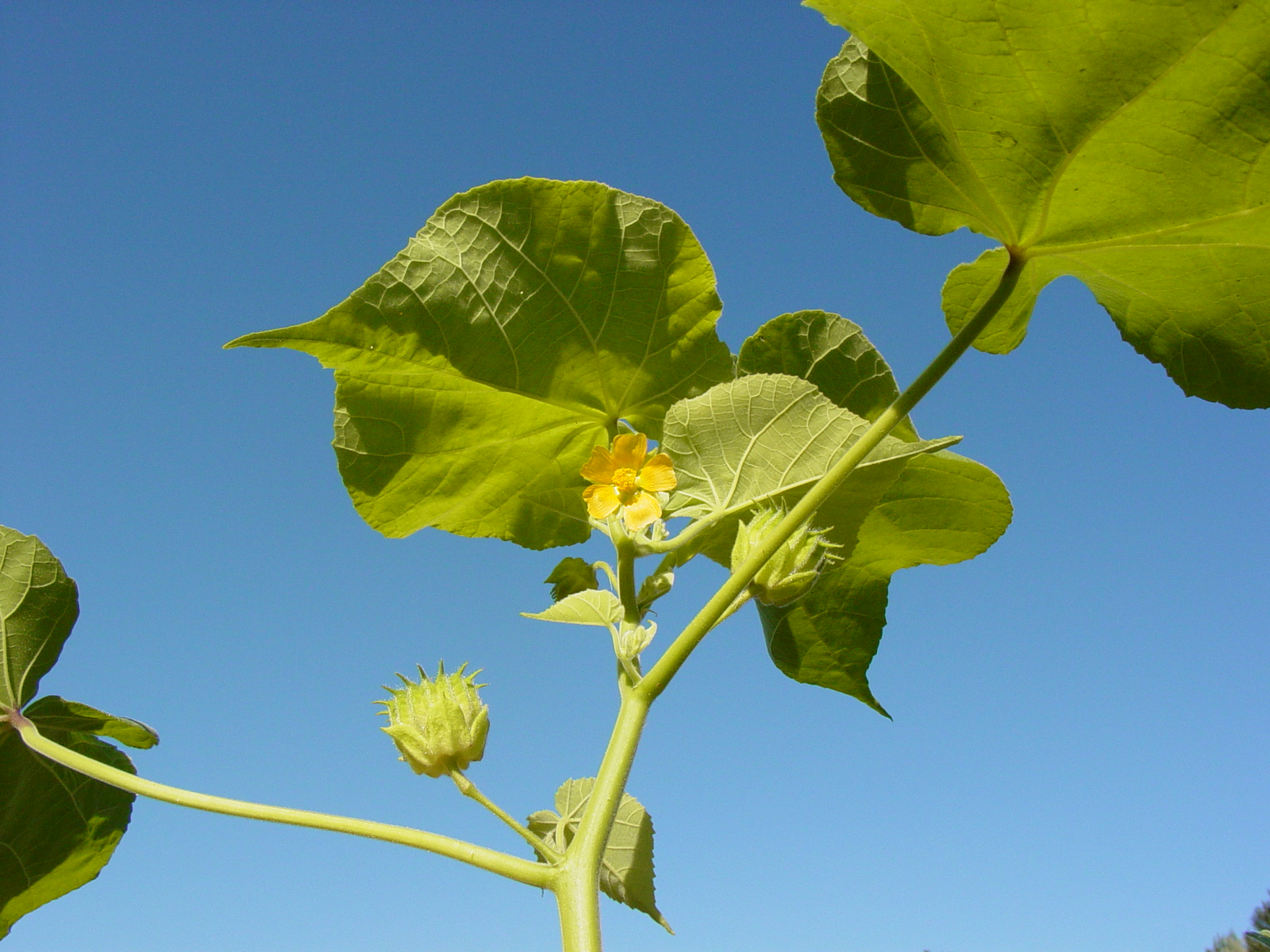
Spring-sprouted versions of this tall, slender weed are five feet tall and ready to turn brown and drop seeds from their mature flower spikes by October. But new marestail plants also germinate in late summer to produce short, October rosettes of hairy, gray-green leaves that overwinter to send up spikes next season.
Lifecycle: Summer and winter annual
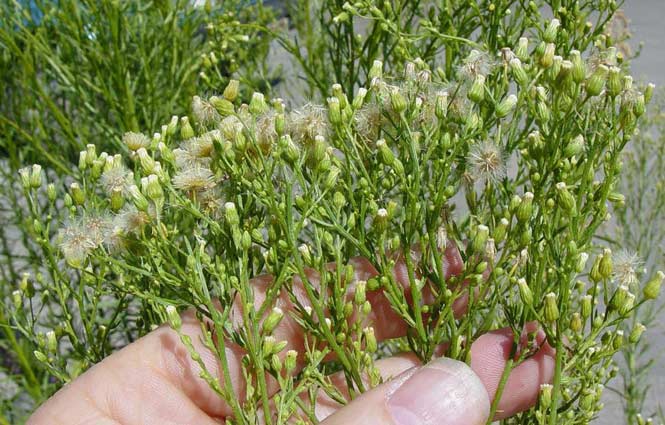
If you like this article, join our mailing list to receive emails with expert advice to help gardeners understand, identify, and control weeds, as well as timely gardening tips. Articles cover topics such as common weed identification, seasonal weed control strategies, and tips for maintaining a healthy, weed-free landscape while keeping your garden thriving.